Australia is one of the most biologically unique places on earth. Most Australian animals do not occur anywhere else. It is also a huge country and the best way to explore Australian nature is on a road trip, like the epic Adelaide to Darwin road trip my friend and I recently took.
I spent weeks researching the best places to see wildlife and diverse habitats in Australia and in the end, came up with an action-packed itinerary for a three-week 3,000-km Adelaide to Darwin Road Trip with stops at all major natural and wildlife attractions along the way.
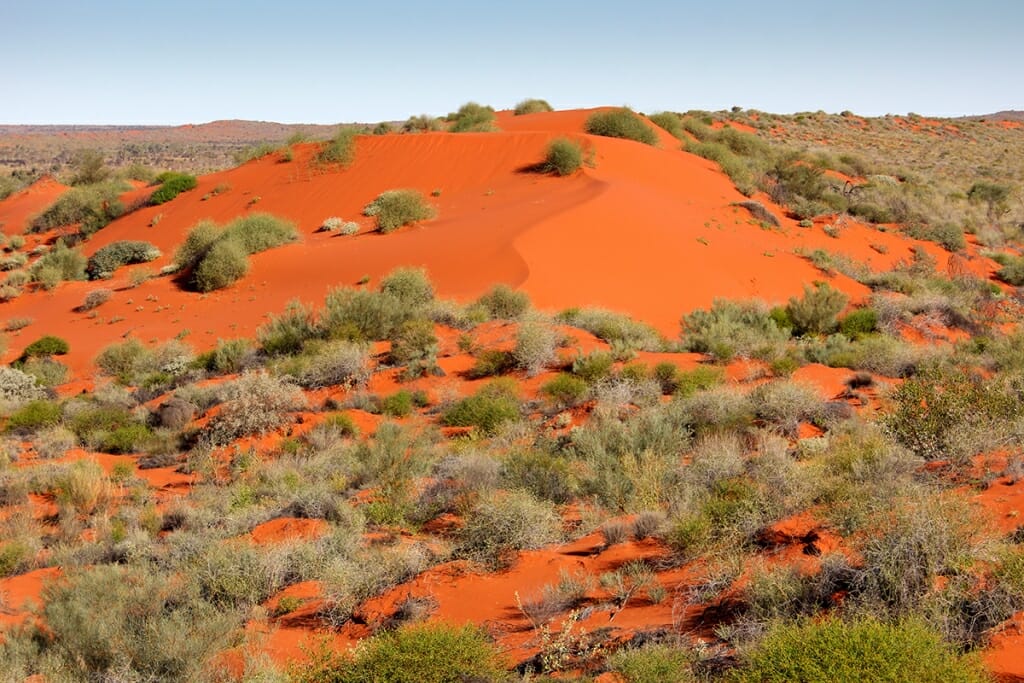
So if you are looking for ideas for an epic Australian drive, this Adelaide to Darwin road trip itinerary will take you across the entire continent through deserts and wetlands, ancient mountain ranges and secret gorges. Plus, you are guaranteed to see an incredible array of Australian animals on this road trip.
Logistical Considerations for Adelaide to Darwin Road Trip
The Car
One of the first things to know before visiting Australia is that the continent is vast. This road trip takes you to some pretty remote areas with variable road conditions, so a 4w4 vehicle with high clearance is a must. If you don’t have your own 4×4, you can rent one in Adelaide. You could even drop it off in Darwin if you want to make a one-way trip.
The best way to find a good deal on a rental car is to use an online rental car booking company like DiscoverCars.com to compare prices and availability from many different rental agencies. Rental 4x4s can be hard to come by, but on Discover cars you always find a few options to choose from.
It would also be a good idea to get an extra car battery and rig up a charging station in the car, especially if you are bringing cameras and laptops.
Accommodation
We chose to camp on our trip, and it worked out very well, as some of the places we visited didn’t have any accommodation options available on-site. But if you prefer to sleep in the comfort of a proper bedroom, I will provide suggestions for the best accommodation options for each destination.
If you do decide to camp, I’d highly recommend bringing a walk-in tent, like a Shiftpod. Another way, of course, would be to make this journey in a camper van, which you could pick up second-hand on a site like Gumtree.
Whichever way you go, invest in some quality camping chairs to relax in the evening with a glass of wine as you watch the sun go down. If you are looking for ideas, here are some of the best camping chairs in Australia.
So, if you are curious about what are some of the best places to see unique Australian wildlife on the Adelaide to Darwin road trip, read on and explore Australia’s wild places and creatures.
Flinders Ranges National Park
Distance from Adelaide: 440km. Driving time: 5 hours
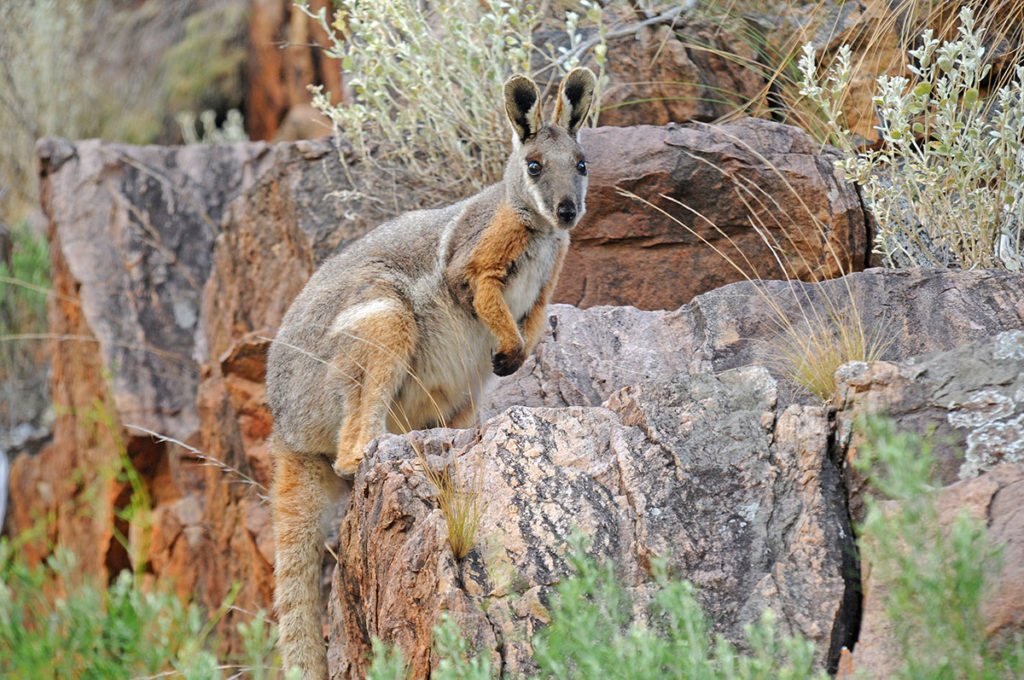
One thing you appreciate on a road trip across Australia is just how huge the country is. Especially when driving through the interior of the country, where most places of interest are at least 500 km apart. As we left Adelaide, our GPS happily announced that we had 439 km to go until our destination in Flinders Ranges National Park.
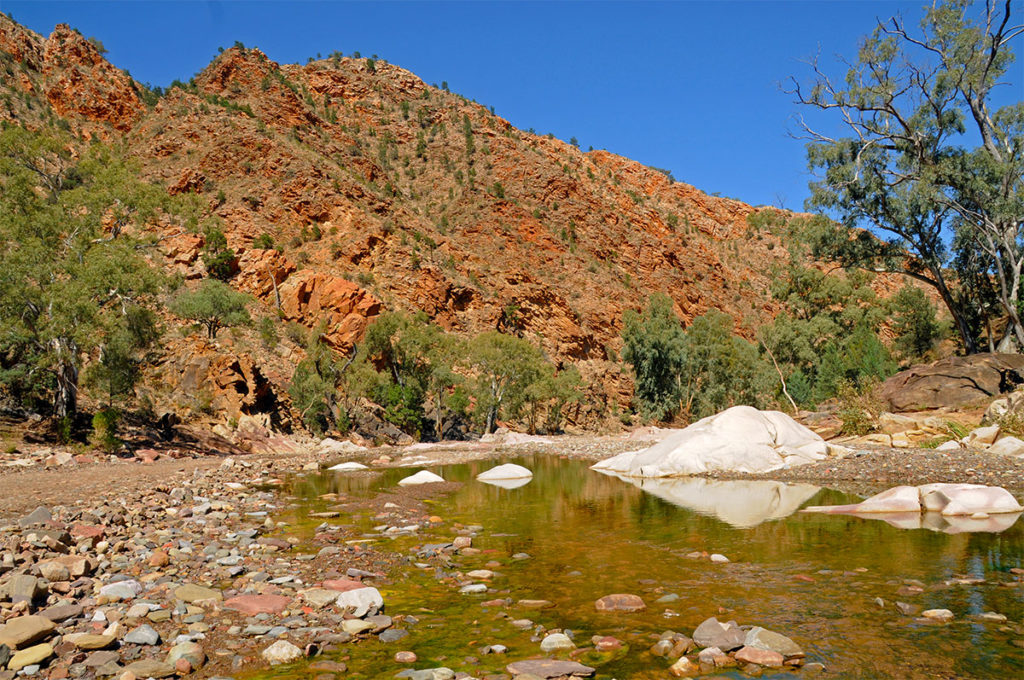
Flinders Ranges is the largest mountain range in South Australia, and it is millions of years old. You reach it about 200km north of Adelaide, and it is a very scenic drive.
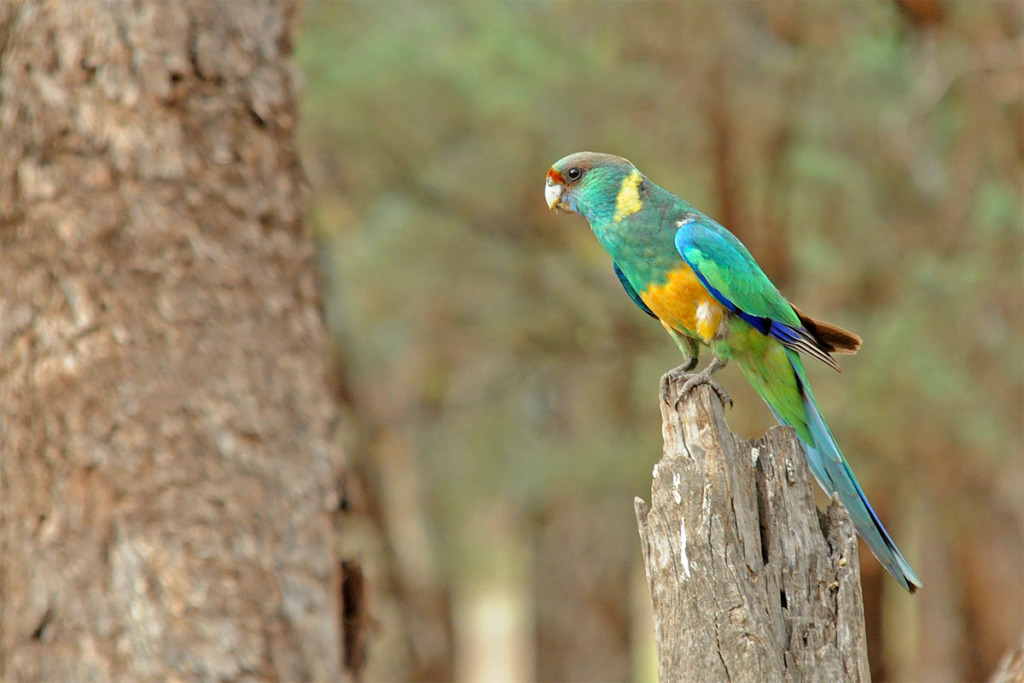
We spent the first night of our Australian safari camping at Wilpena Pound, and our wildlife adventures started right at the campsite the following morning. Western grey kangaroos snoozed in the shade, bright-coloured Mallee Ringneck parrots hopped on the ground between the tents and Apostlebirds perched in the low-hanging branches.
As the first order of business, we drove to the spectacular Brachina Gorge, and sure enough, we spotted some Yellow-footed rock wallabies sunning themselves in the early morning sun. I personally think that they are the most good-looking macropods in Australia.
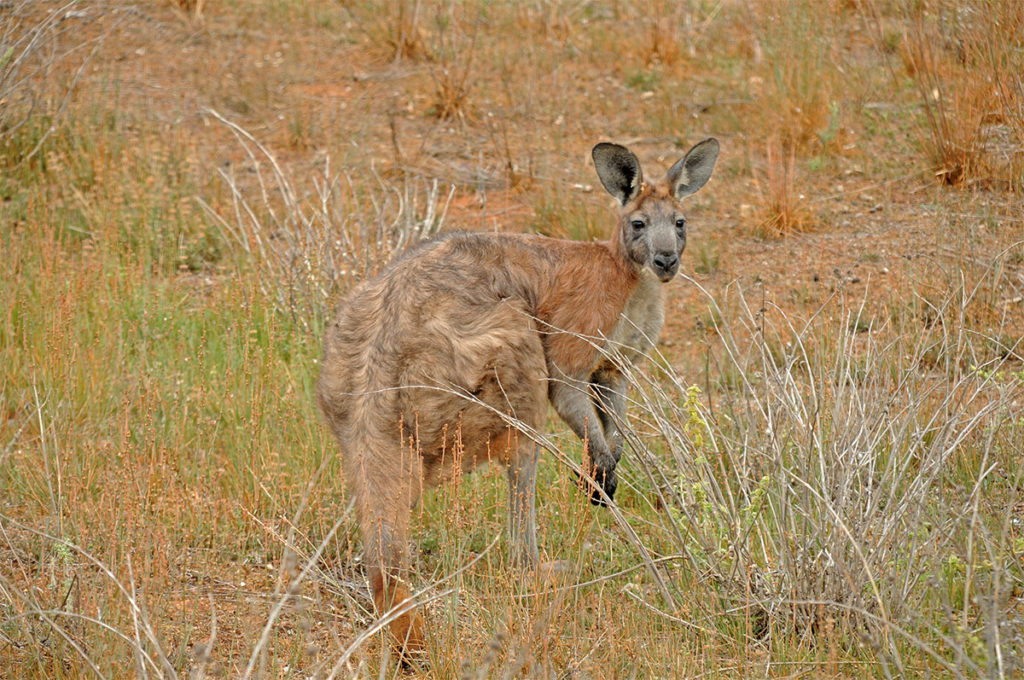
As we drove around the park, we spotted plenty more iconic Australian animals: Common Wallaroo, also known as Euro, Red kangaroos, Emus – Australia’s largest birds, and a Brown Falcon perched right by the road on a hilltop. For more details, check out this post about the wildlife of Flinders Ranges National Park.
Where to stay at Flinders Ranges
Wilpena Pound Resort is a lovely, wildlife-friendly resort near Wilpena Pound. It has a number of accommodation options ranging from camping to air-conditioned safari tents to resort-style accommodation.
Coober Pedy & the Breakaways Conservation Park
Distance from Wilpena Pound: 704 km. Driving time: 7.5 hrs
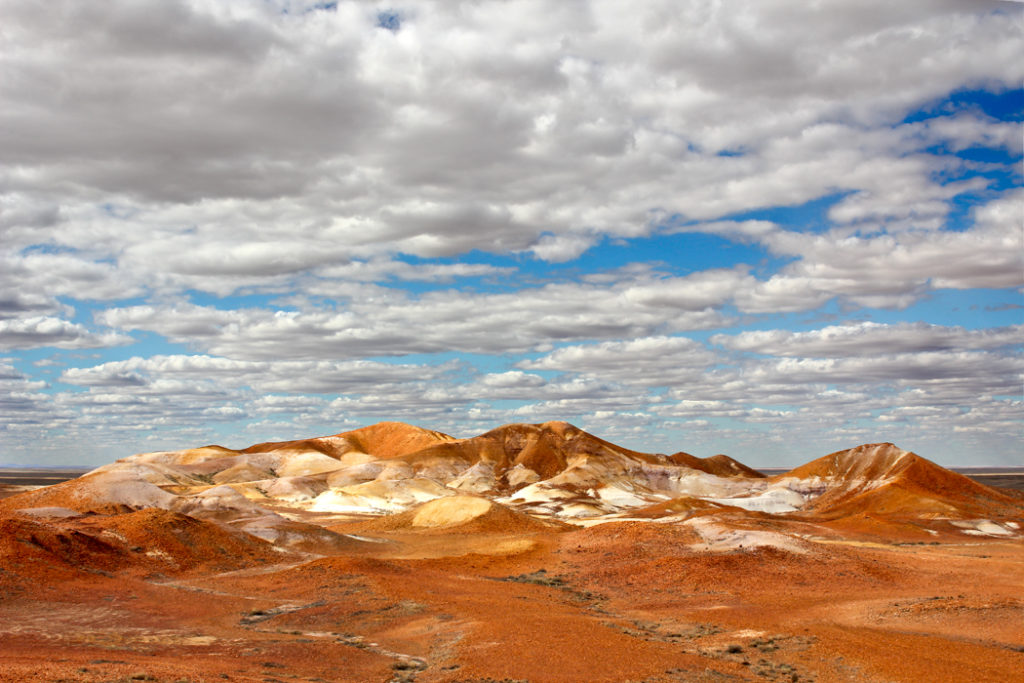
At 712 km, the drive from Flinders Ranges to Coober Pedy is epic, even by Australian road trip standards. It is, of course, possible to break the journey in Port Augusta, but I’ve already been there twice that year, and it is not an interesting enough town to keep revisiting. So, we pushed on all the way to Coober Pedy.
We arrived after dark and straight away checked in at the Underground Motel – the town’s specialty. It was not obvious at night, but we knew that Coober Pedy is a ridiculously hot place. In the middle of the day, the ground temperatures here may reach 60 degrees centigrade.
To avoid the scorching heat, most of the town’s service buildings are located underground. There are underground apartments, underground shops and hotels, an underground church and even an underground caravan park!

The town is a fun place to explore and you can even try your hand at digging opals in Coober Pedy! The most spectacular natural formation near Coober Pedy is the Kanku-Breakaways Conservation Park, 33 km out of town.
There isn’t much wildlife above ground in the Breakaways, not during the day. But the landscape of the park is certainly worth a look. It looks like something straight out of a sci-fi film. In fact, it is. The first film in the Chronicles of Riddick, Pitch Black, was filmed here.
The stark landscape of the Breakaways comprises a series of multi-coloured eroded mounds rising over the desolate rocky plane. The plane, known as the stony gibber desert in Australia, looks remarkably similar to the images from the surface of Mars.
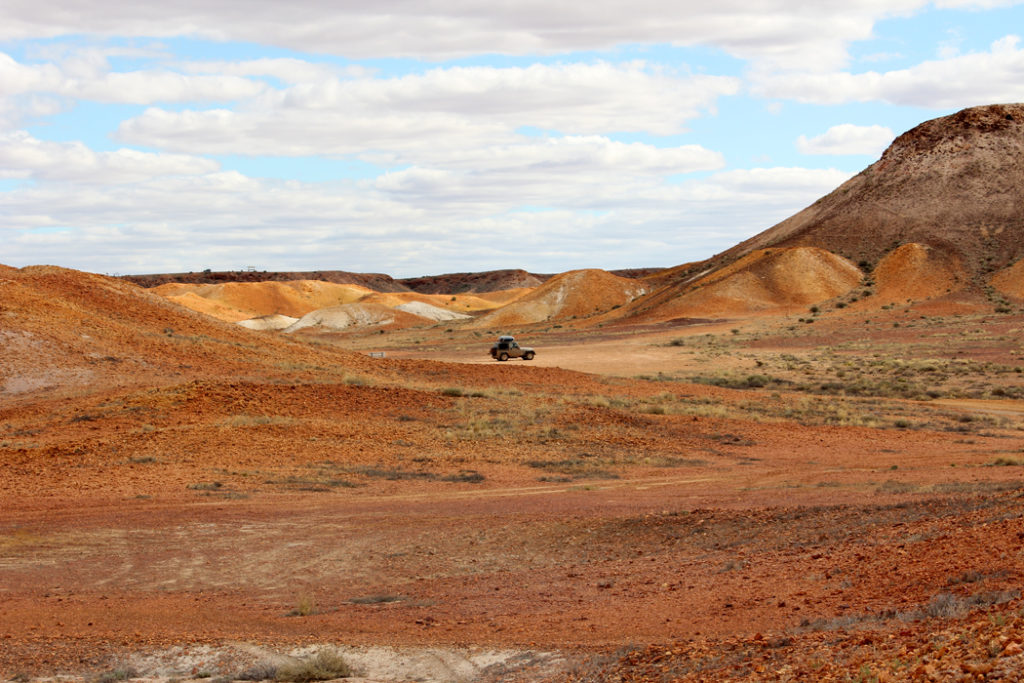
Before leaving the Breakaways, we checked out the Dingo fence – a 5,614 km construction built in the late 1800s to exclude dingos from the sheep country in southeastern Australia. North of the fence, where we were heading, sheep are replaced by cattle that are not as vulnerable to dingo predation. For more details, check out my guide to The Breakaways, Coober Pedy & the Dingo Fence.
Where to stay in Coober Pedy
If you are looking for peace and comfort, Dug out B&B apartments. the most highly-rated accommodation option in Coober Pedy should be your first choice. Located a 5-minute drive from the central part of town it is quiet and peaceful and offers stunning sunrise views. The apartments are modern, well-stocked and feature very comfortable beds.
For a more budget-friendly option, consider Comfort Inn Coober Pedy Experience with its spacious rooms and common areas.
Uluru-Kata Tjuta National Park
Distance from Cobber Pedy: 755 km. Driving time: 8hrs
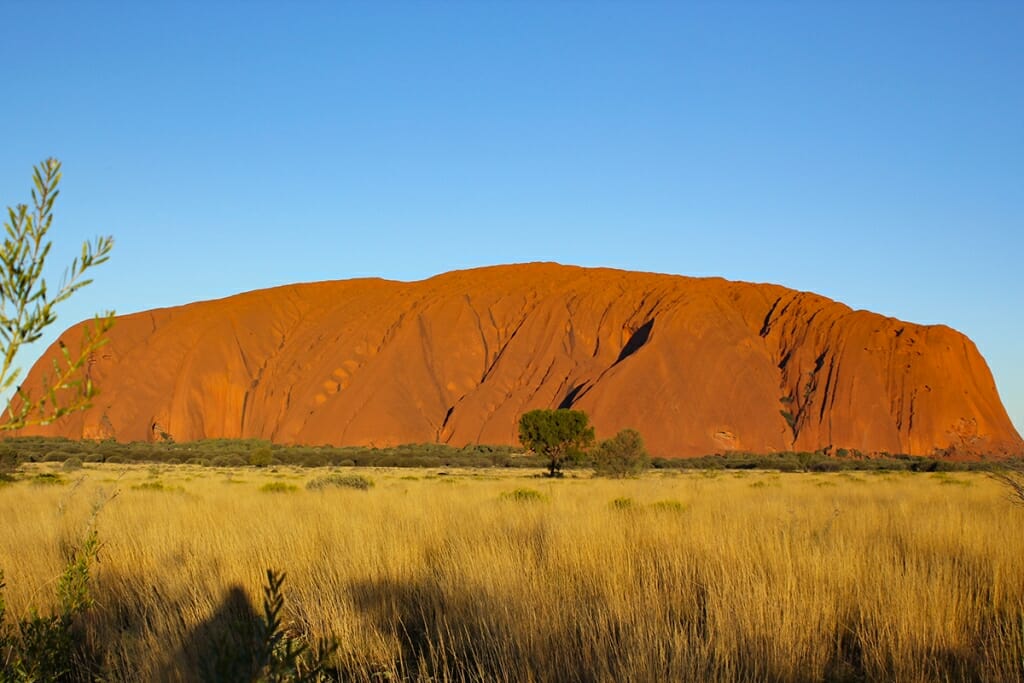
This was another epic day on the road. Uluru is almost 690km from Coober Pedy. Thankfully, about halfway along, we crossed the South Australia / Northern Territory border, and the speed limit increased to 130 km/h.
When we arrived at Yulara, the service village for the Uluru-Kata Tjuta National Park, we were thrilled to discover a very inviting swimming pool at the Ayers Rock Resort’s campground.
Uluru, also known as the Ayers Rock, needs no introduction. It is by far the most recognizable Australian landmark and a popular destination for any Central Australian road trip. The nearby Kata Tjuta is another interesting geological feature made up of boulders and cobbles of different sizes and rock types.
We spent three days exploring the park and checking out the local Uluru wildlife, walking in the early hours to avoid the heat of the day and driving around in the middle of the day.
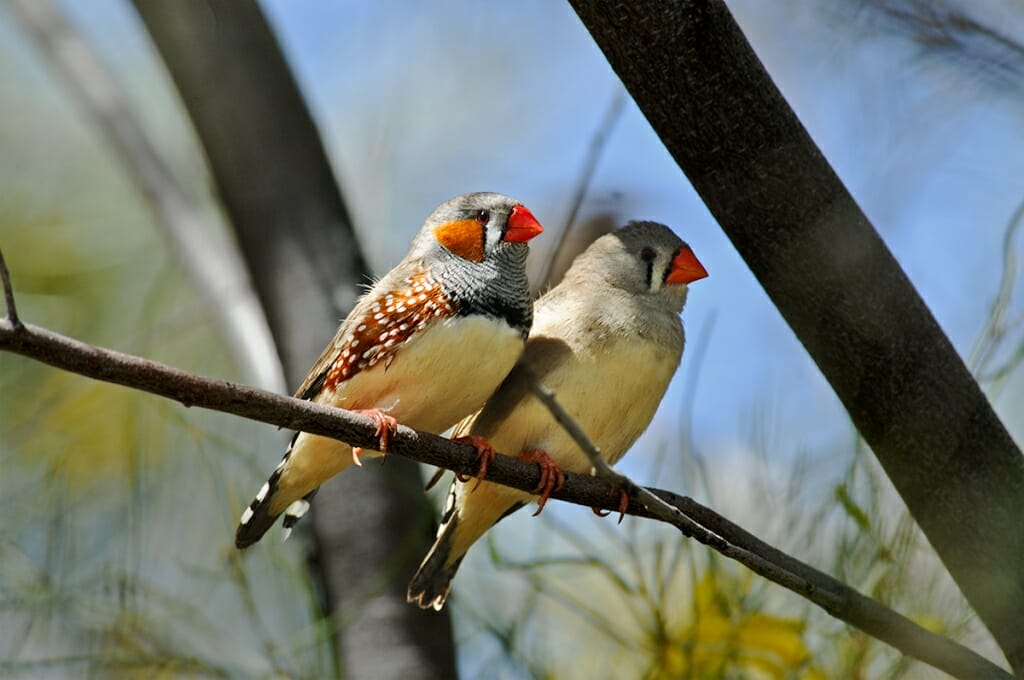
We spotted plenty of desert-dwelling birds during our walks, the most memorable being the brightly painted Zebra finches, Mistletoebird and Spinifex pigeons. But most of the wildlife spotting took place after the sunset.
Uluru lookout gets quite crowded just before sunset, with visitors lining up for those iconic views of the Rock changing colour under the setting sun. But as soon as the sun dips below the horizon, ALL visitors leave and miss seeing a little wildlife spectacle.
Even before the last cars drove off, we could see some movement in the grass. Minutes later, the car park became the hive of activity once again as Spinifex hopping mice emerged to browse on the crumbs left after the day of tourist activities.
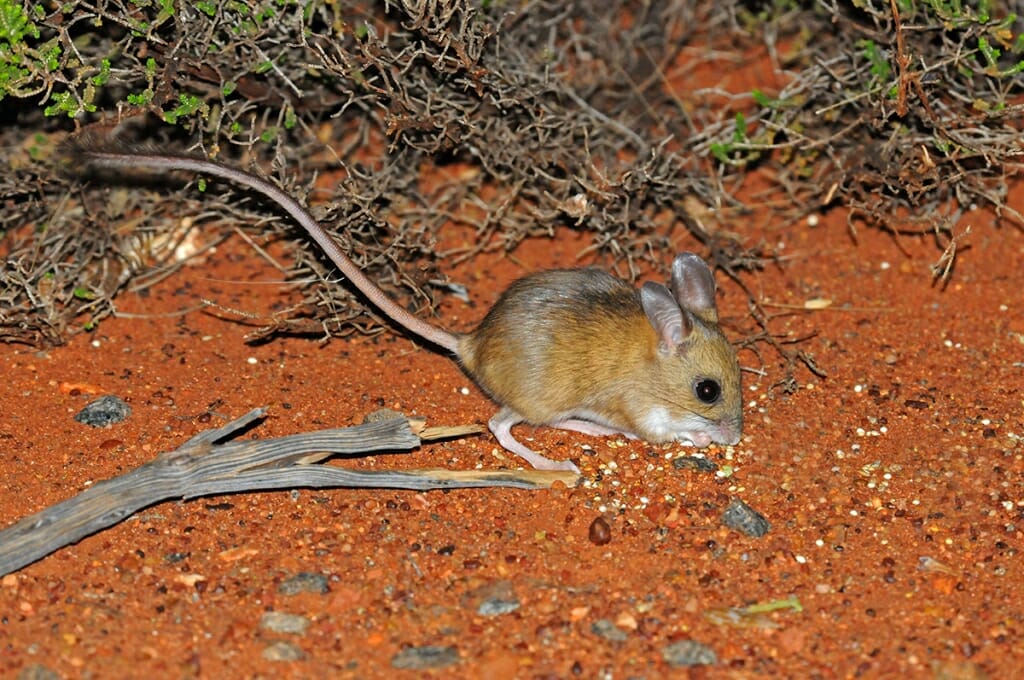
The hopping mice are rodents, not marsupials, but very have long and powerful back legs that allow them to hop like the tiny little kangaroos. Among the hoppies, there were some Sandy inland mice and some feral House mice. We also had all three species at the campsite, particularly on the dunes near the kitchen.
There is a short walking trail at the entrance to the campsite that leads to the top of a dune, where you can find an abandoned corrugated iron shack. We found some Broad-nosed bats roosting in it.
For more details on the walking tracks around the base of Uluru and Kata Tjuta and on the wildlife of the region, check out my guide to Uluru animals – Weird and wonderful creatures you can spot at Uluru.
Where to stay at Uluru
The spacious and well-equipped Emu Walk Apartments are just a short walk from Ayers Rock Resort Centre. Each apartment has its own balcony or a veranda.
Kings Canyon – Watarrka National Park
Distance from Uluru: 324 km. Driving time: 3.5 hrs
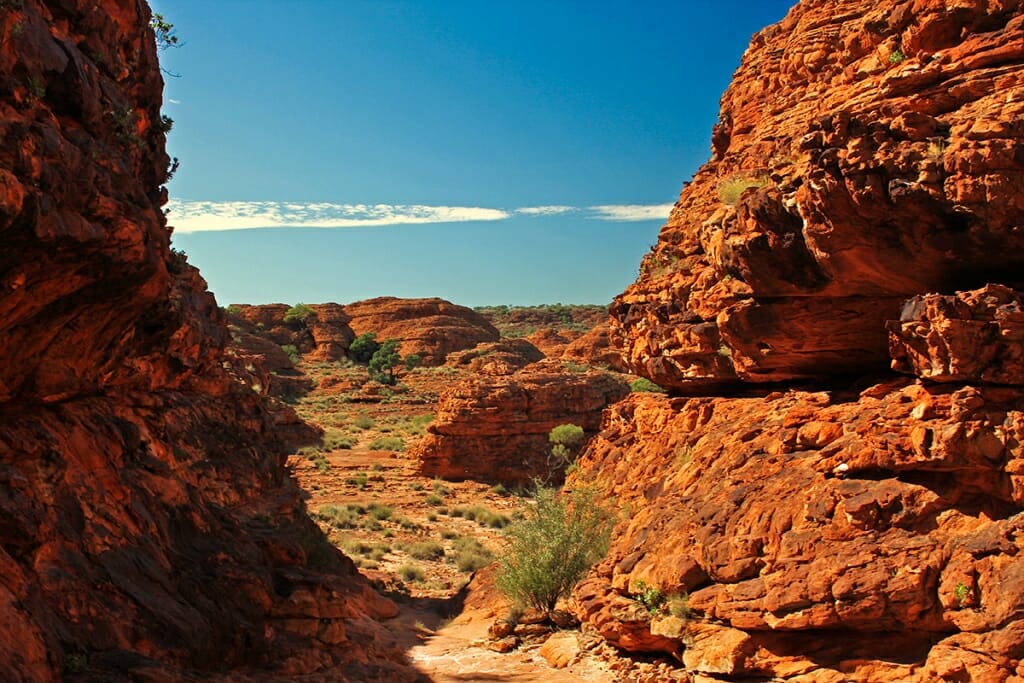
From Uluru, we headed to the Kings Canyon – another stunning geological feature of Australia’s Red Centre.
We camped at the Kings Canyon Resort, and this is where I saw my first ever Dingo. First thing in the morning, I unzipped the tent door, and there it was, standing just a couple of meters in front of me, sniffing something in the grass.
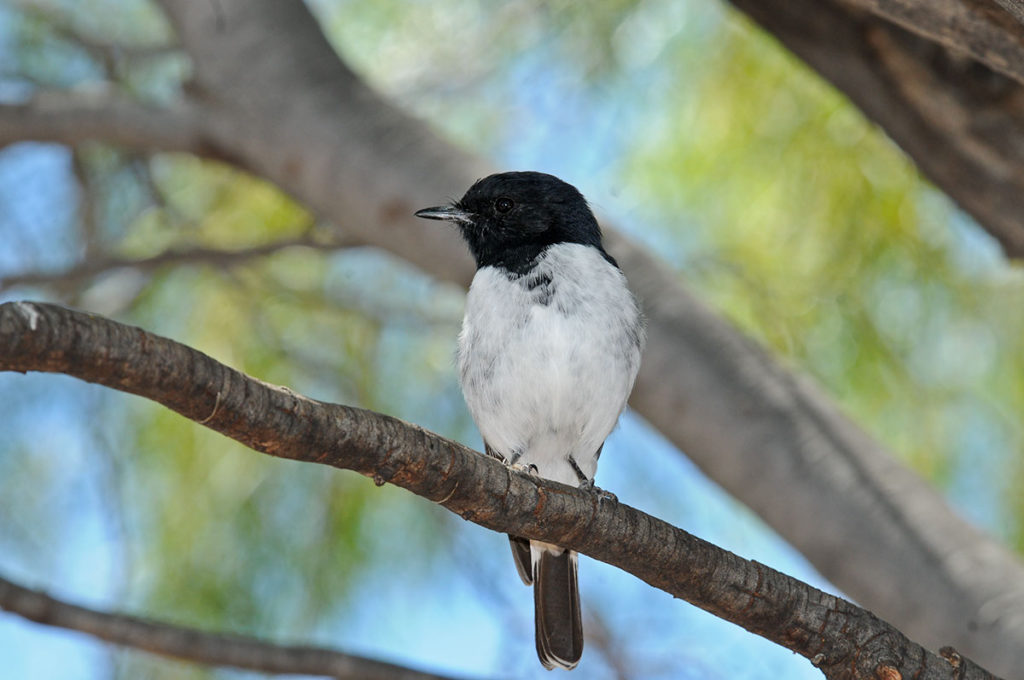
After the exciting dingo encounter, we spent the morning hiking the Grand Canyon Rim trail. With the day temperatures reaching mid-40s Centigrade, this walk is best done before the sun gets too high in the sky.
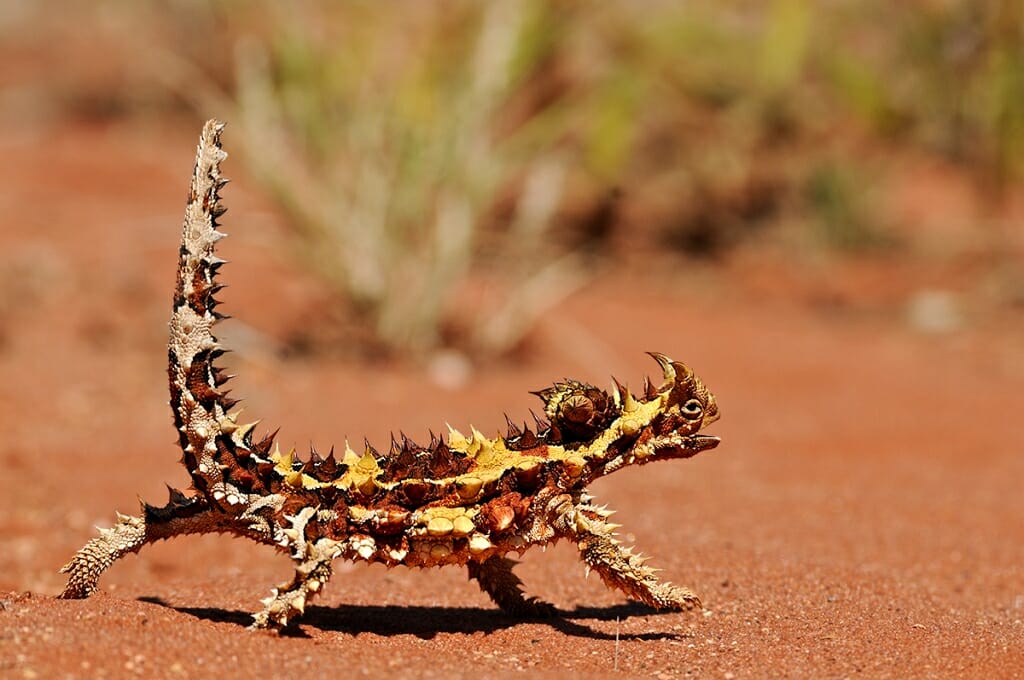
We didn’t spot much wildlife on the walk, apart from a very well-camouflaged Ringtail dragon, but the scenery of this monumental landscape easily compensated for the lack of wildlife activity.
The car park, however, was teaming with life. Hooded robins, Spinifex pigeons, Diamond doves, Crested pigeons, Grey honeyeaters and even a Rock cenotes were all happy to escape the heat of the day under the cover of trees and bushes.
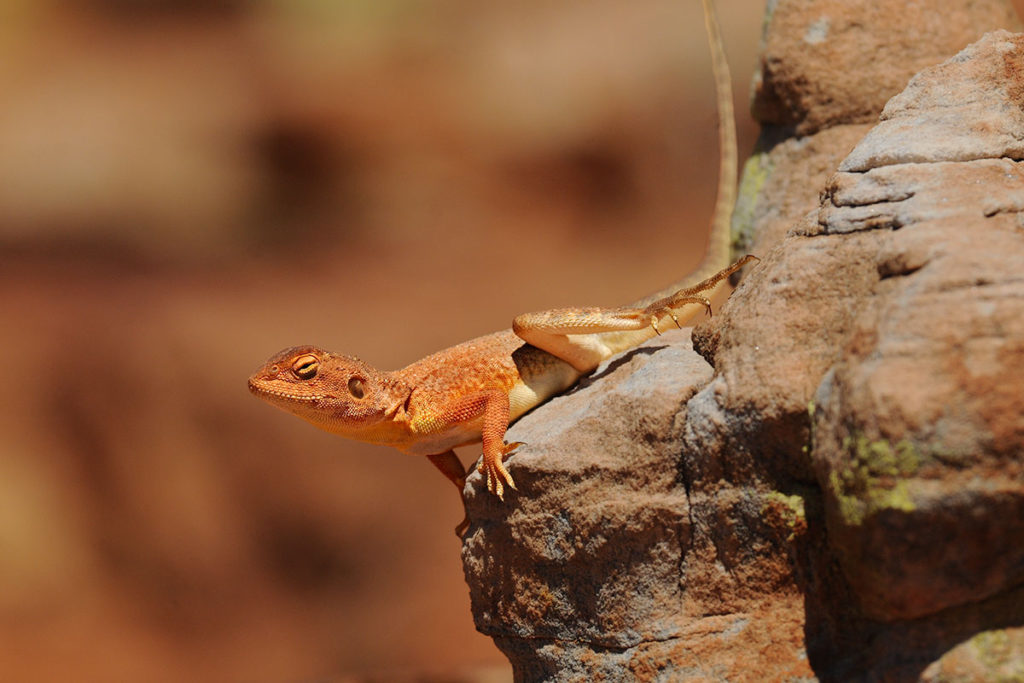
The following day, we spotted one of the most unusual Australian animals – the Thorny Devil. Apart from a menacing array of conical spikes, this desert lizard is endowed with a false head! Just to confuse the predators (and some tourists).
Where to stay at Kings Canyon
Kings Creek Station provides accommodations with an outdoor pool, a restaurant and a bar. The accommodation options include bush tents, luxury glamping tents and more traditional hotel-style rooms.
Alternatively, Kings Canyon Resort offers a range of traditional rooms and budget-friendly options.
West MacDonnell Ranges
Distance from Kings Canyon via Mereenie Loop: 235 km. Driving time: 3.5 hrs
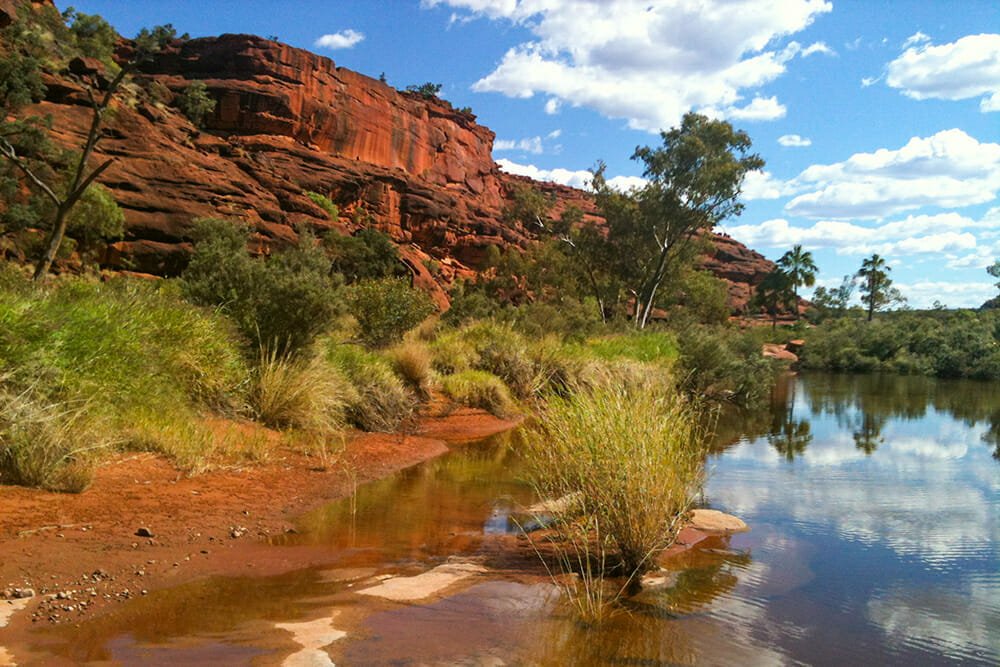
From the Kings Canyon, we followed the Mereenie Loop Road to explore the West MacDonnell Ranges. You can find more details in my post on West MacDonnell Ranges or check out the highlights below.
Palm Valley
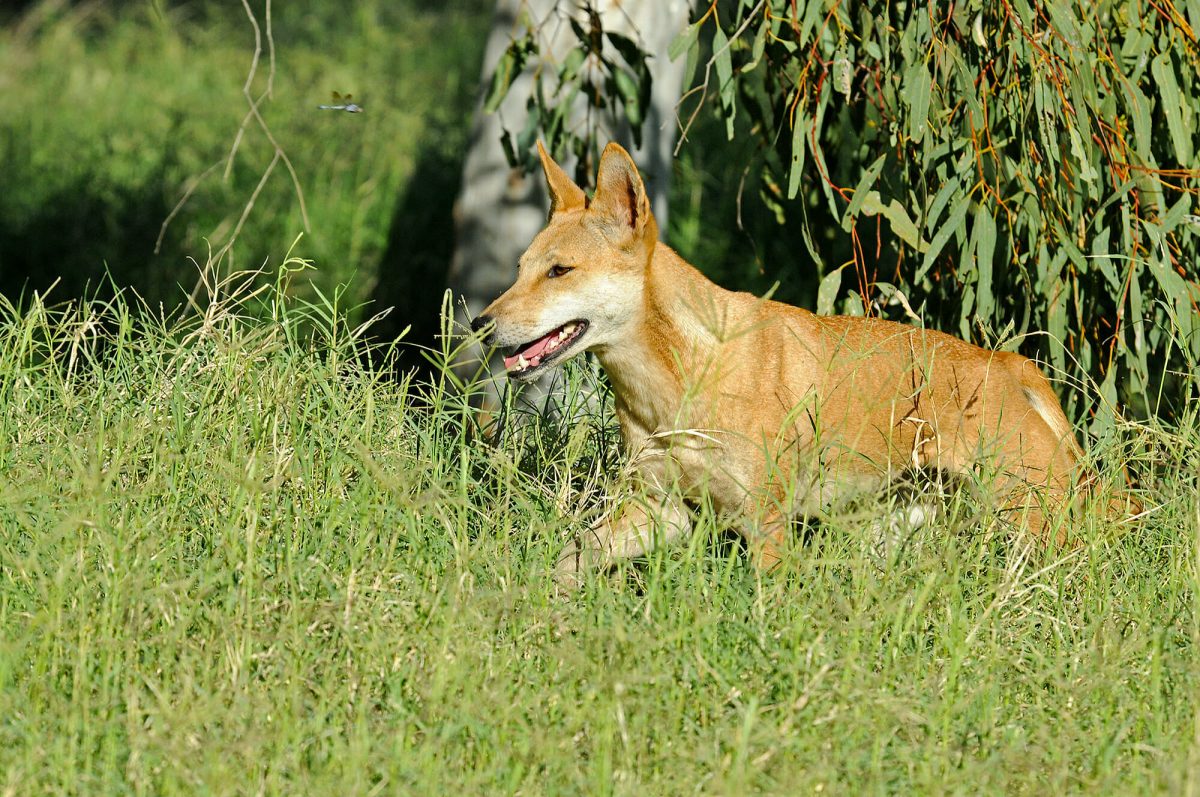
Our first stop was Palm Valley – the least-explored part of the West MacDonnell Ranges. Located within Finke Gorge National Park, Palm Valley is one of the most unusual places in Central Australia.
Here, one of the most ancient rivers in the world cuts its way through a rugged gorge, creating a valley filled with Red Cabbage Palms. It is thought that the palms originated here back when the area enjoyed a gentler tropical climate.
The access road to the valley is very rough and requires a high-clearance 4WD and a cautious approach. When we arrived at the campsite, we were happy to discover that we were the only visitors – we had the entire valley to ourselves.
We found our first wildlife species, Spencer’s burrowing frogs, on the river bank at the campsite. These unusual amphibians spend most of the year in the subterranean chambers that they dig for themselves – a perfect adaptation for life in the arid environment.
The following morning, a beautiful female Dingo visited us at the campsite and stayed with us most of the morning.
Glen Helen
Back on the Mereenie Loop, we headed to Glen Helen Gorge where we spent a lazy afternoon watching birds coming to the river for a drink. There was a flock of noisy Zebra finches, some Spinifex doves, and even a Great cormorant!
Ormiston Gorge
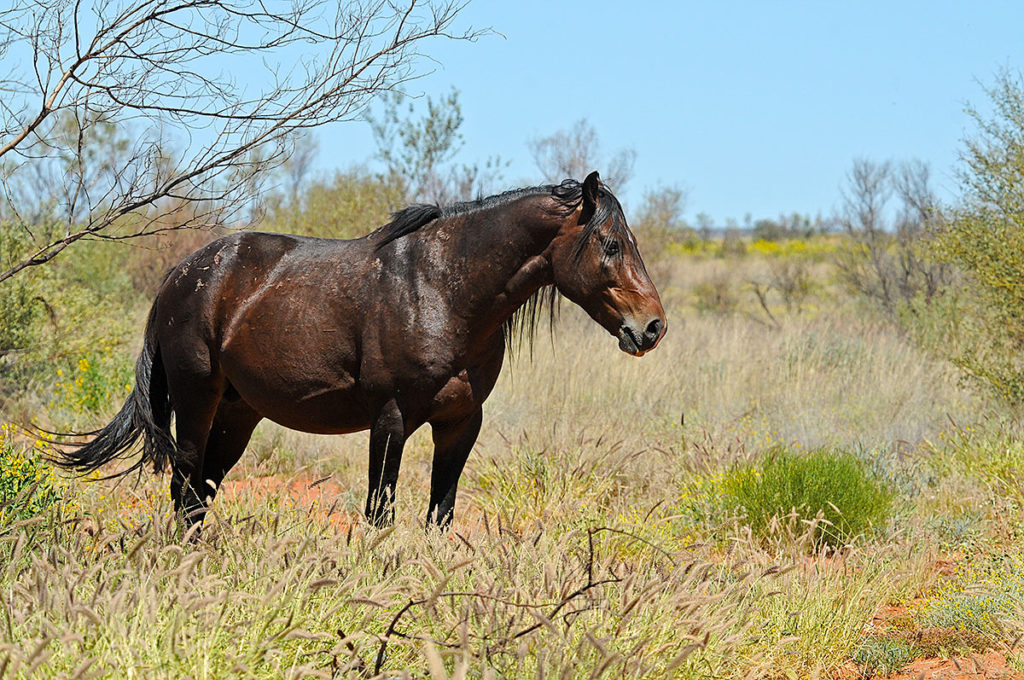
The next stop was the Ormiston Gorge, but we had most of our wildlife sightings along the road. I spotted my first-ever Brumby – a feral wild horse and a flock of Budgies. When I was a kid, I used to have a pet Budgie, and for a moment, it seemed crazy that I was now living in a country where Budgies live in the wild.
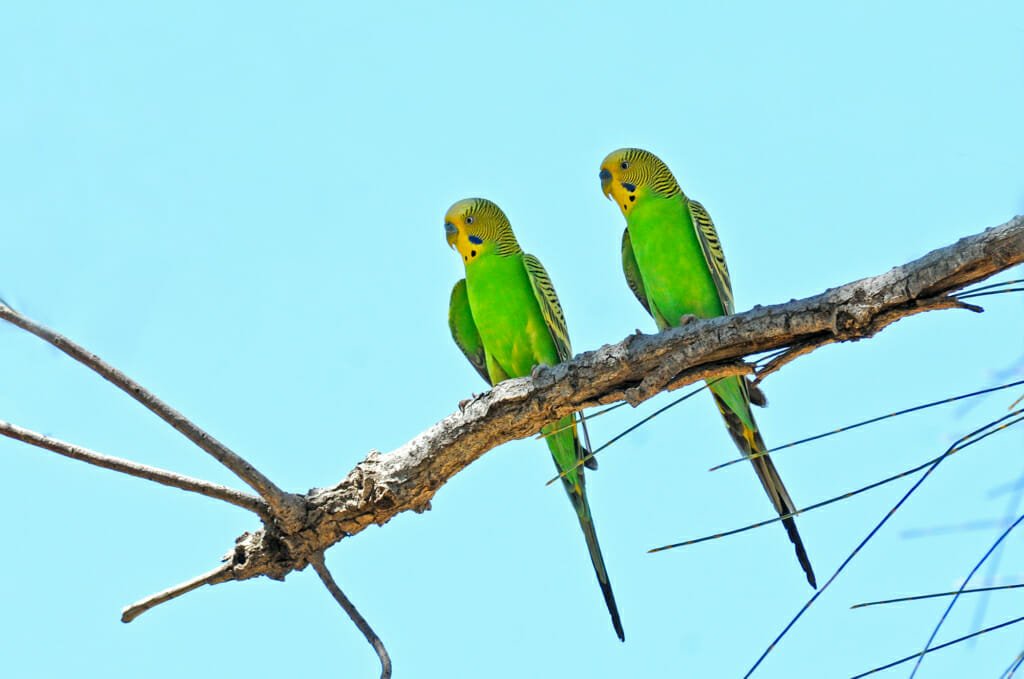
The gorge itself turned up Dusky grasswrens, Brown honeyeaters and Grey-headed honeyeaters, and a couple of distant Black-footed rock wallabies at night.
In the morning, I took a dip in the swimming hole and found some company – a Perentie – the largest goanna in Australia, rustling in the reeds.
Simpsons Gap
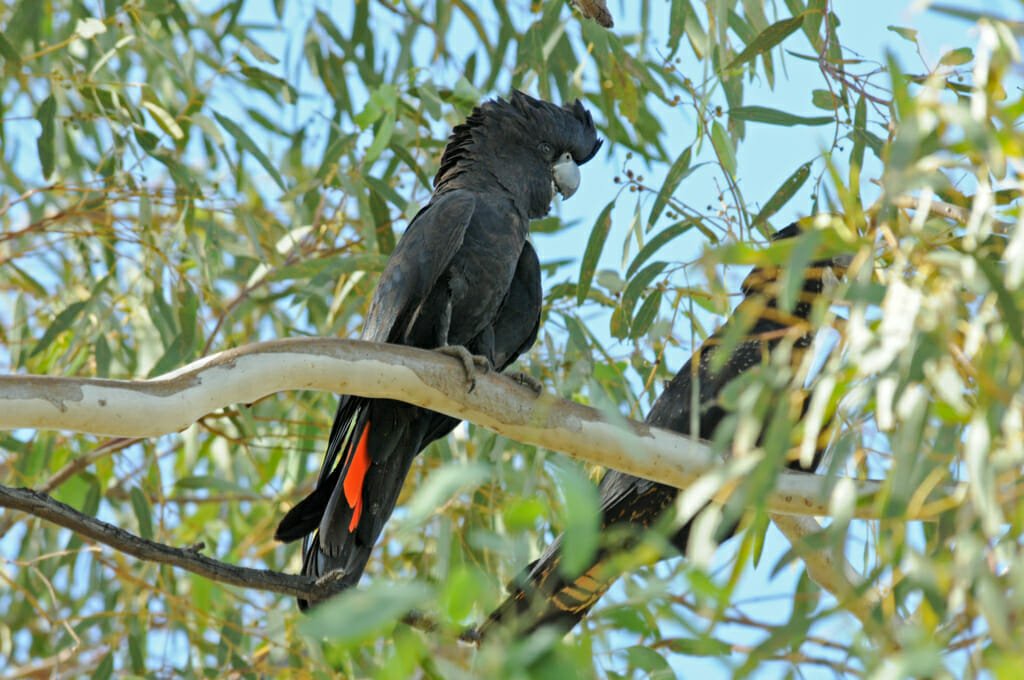
Our last stop on the way to Alice Springs was the Simpsons Gap, where we hoped to watch Black-footed rock wallabies sunning themselves in the late afternoon sun.
Unfortunately, as soon as the wallabies emerged, a Wedge-tail eagle appeared overhead, and the wallabies scattered out of sight. The eagle seemed to be involved in some dispute with a family of Peregrine falcons, which continued until sunset.
Luckily, we got a chance to watch some Red-tailed black cockatoos at the park’s headquarters on the way in, so not the entire afternoon was unlucky.
Where to stay in West MacDonnell Ranges
The only option in West MacDonnell Ranges themselves is the Discovery Parks in Glen Helen. The Homestead offers dorm rooms and private rooms. Alternatively, you can stay in Alice Springs and explore West Macs on day trips.
Alice Springs
Distance from Simpsons Gap: 24 km. Driving time: 25 min
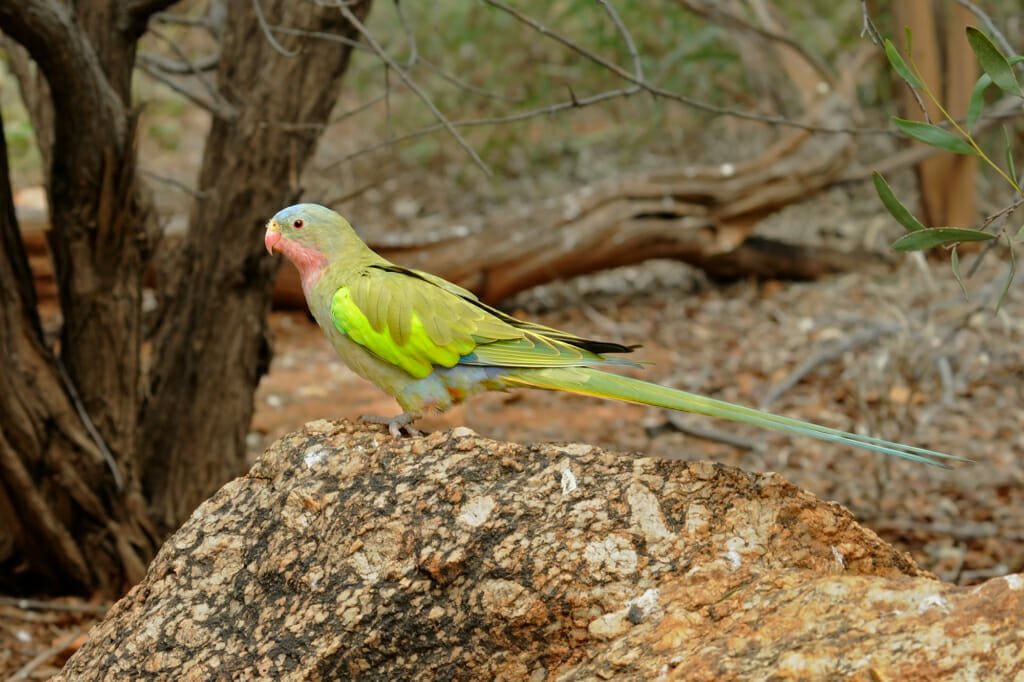
After almost two weeks on the road on our Adelaide to Darwin road trip, we arrived in Alice Springs and used the opportunity to re-stock, have some decent coffee and run some domestic chores. Neither of us liked the city much, so we spent the day at the Alice Springs Desert Park checking out some of the wildlife we missed in the wilderness.
In the late afternoon, we took a quick trip to Heavitree Gap caravan park to watch the Black-footed rock wallabies at close range. The animals live in the hills above the park, and you can even buy some pre-packaged wallaby food at the park’s shop.
Simpson Desert & Old Andado Station
Distance from Alice Springs: 362 km. Driving time: 5.5 hrs

So far, we’ve been visiting mostly well-known, even iconic parts of Central Australia, the ‘must-see’ stops for any Adelaide to Darwin road trip. But our next destination was completely off the radar, and I was very excited to check it out. Old Andado is a former cattle station that lies on the edge of the Simpson Desert, 330km southeast of Alice Springs.
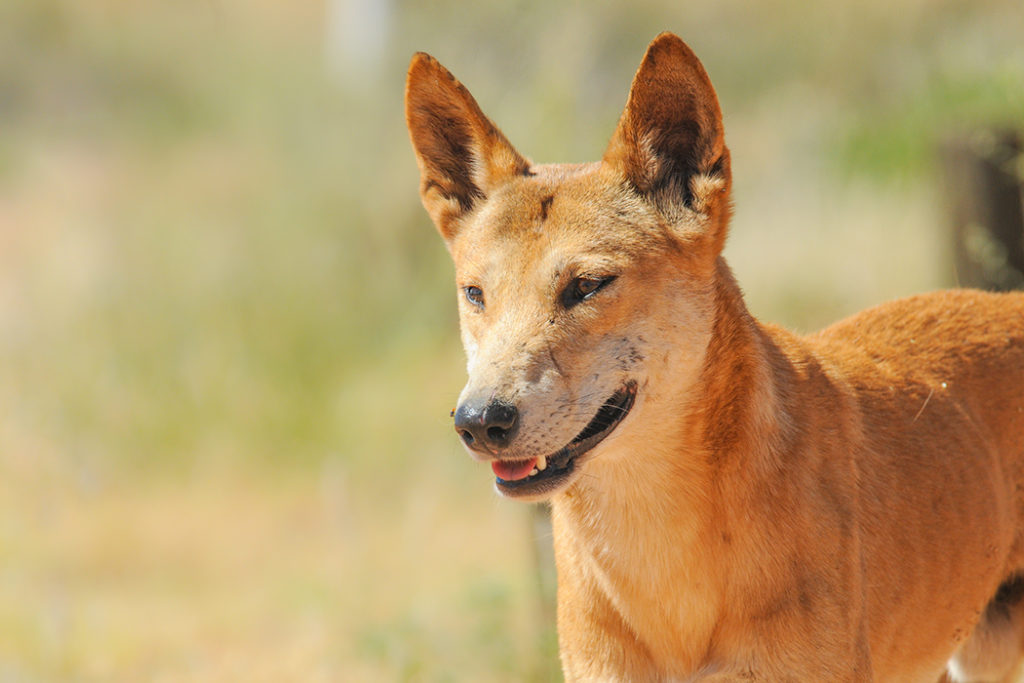
The homestead of the now abandoned station functions as a free museum of Outback life in the 1920s. You can camp for free in the home paddock or stay in one of the basic dorm rooms for a small fee. But for us, the most interesting part was the surrounding landscape of bright red sand dunes and the Australian desert animals living there.
In the desert, life flows in boom and bust cycles as animals respond to changing conditions from drought to rainfall. And we happened to be visiting during a very obvious boom. There were more birds around the homestead than I saw in any one place in Central Australia. Galahs, Little Corellas, swallows and martins moved around in large groups and Black kites perched in trees in their dozens.
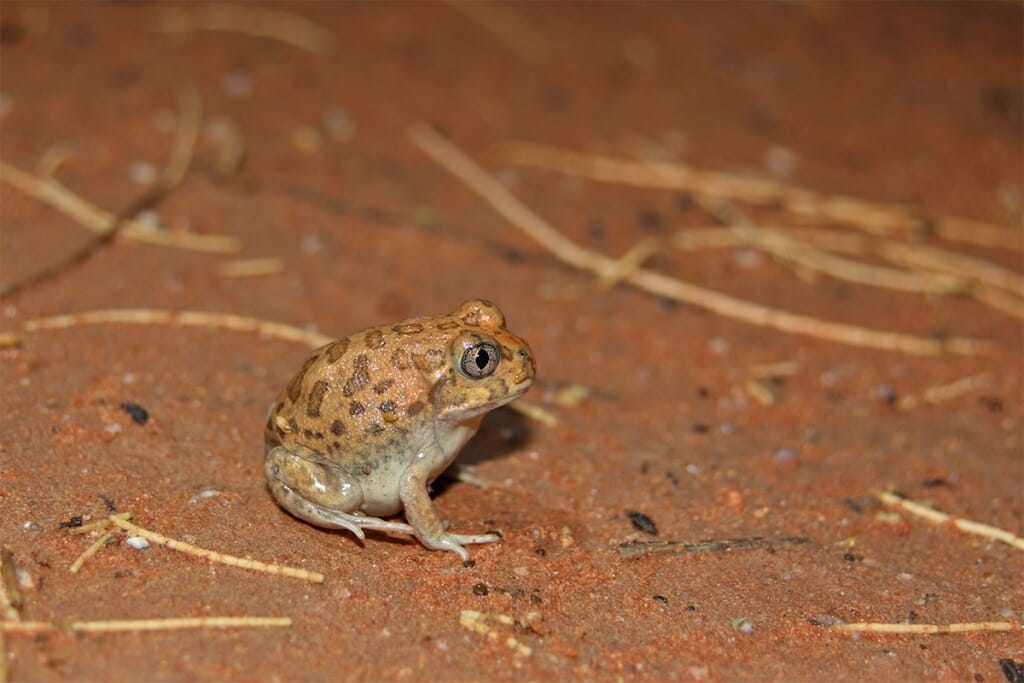
At night we explored the dunes that were teeming with rodent activity. Spinifex hopping mice, Australian Desert mice and Long-haired rats were busy raising their young before the period of bounty ended. I recently learned that a group of mice is called mischief of mice, and these guys certainly looked quite mischievous.
On the gibber plains, we spotted a Lesser hairy-footed dunnart and dozens of desert frogs. Such an abundance of prey attracted high numbers of predators. Apart from Dingos, we spotted a cat and a fox.
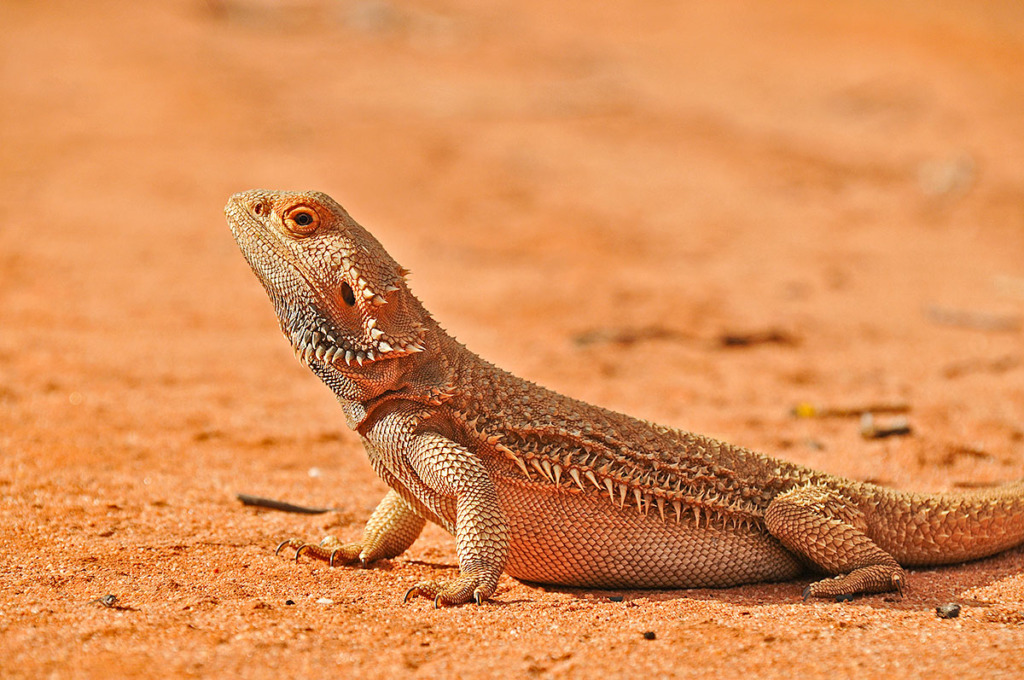
The post on visiting the Old Andado Station provides more tips and ‘know how’ on visiting the Simpson Desert.
In stark contrast to the dry climate of Australia’s Red Centre, the northern part of the Northern Territory, known as the Top End, is characterized by humid tropical heat, high rainfall and much more lush vegetation. It is also home to an entirely different variety of wildlife species.
Wycliffe Well & Devils Marbles
Distance from Alice Springs: 412 km. Driving time: 4 hrs

After a night in Alice Springs, we hit the road again and started the second part of our Adelaide to Darwin road trip. Though, while we crossed the Tropic of Capricorn 30 km north of Alice Springs, we haven’t felt the increased humidity the entire first day of driving.

We drove as far as Wycliffe Well – The self-proclaimed UFO Capital of Australia, where we camped at Wycliffe Well Holiday Park among the alien paraphernalia. The reason we stayed at Wycliffe Well was its proximity to Devils Marbles or Karlu Karlu – a curious rock formation made up of rounded boulders precariously balancing on top of each other.
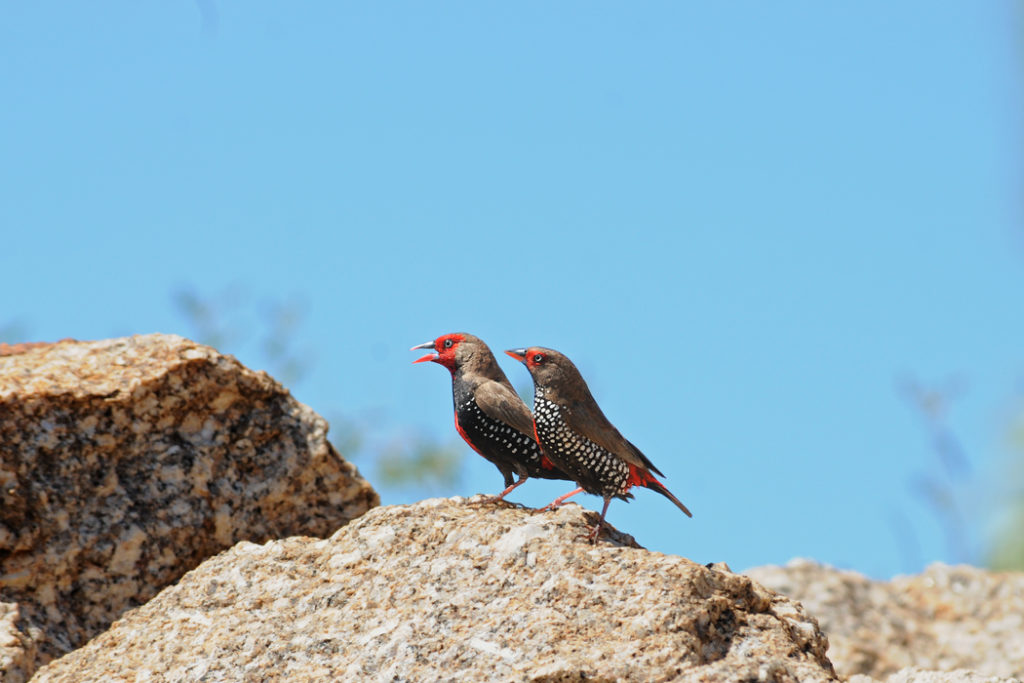
One of the most recognizable symbols of the Australian Outback, Devils Marbles is also one of the most visited reserves in the Northern Territory. Though when we visited, at about 9 in the morning, there were only two other cars parked at the entrance. And a Dingo!

Exploring the boulders, we found a pair of courting Painted finches, a Spinifex bird, a tiny little Weebill and some Diamond doves. You can find more details in my guide to visiting Devils Marbles.
Where to stay at Wycliffe Well
At Wycliffe Well itself, there is only the Wycliffe Well Holiday Park. If you don’t wish to camp, Tennant Creek is the closest accommodation. Safari Lodge Motel offers twin and family rooms.
Mataranka Hot Springs in Elsey National Park
Distance from Devils Marbles: 668 km. Driving time: 7 hrs
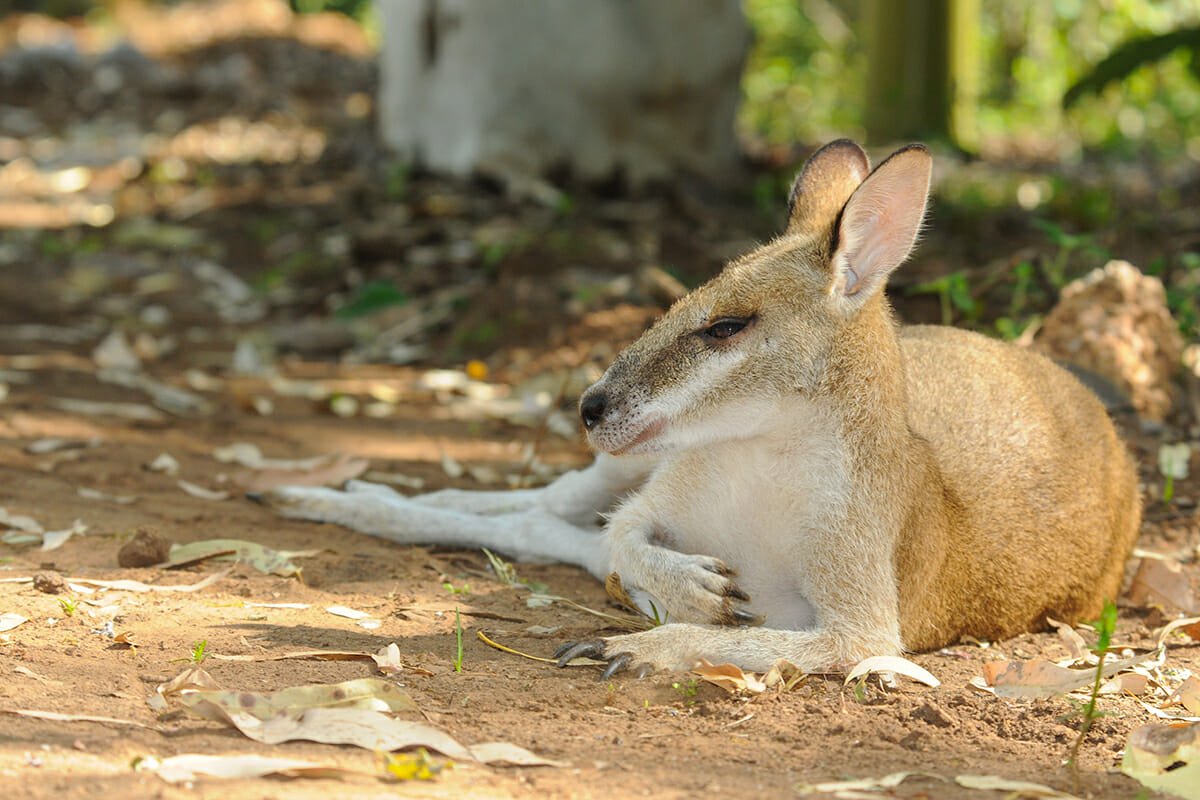
Stepping out of the car at Mataranka in Elsey National Park, we knew straight away that we had reached the tropics. Even in the evening, it felt like a sauna. And humid heat at night usually means that a lot of frogs will be out and about.
Before turning in for the night, we went on an exploratory walk around the campground and found some giant Northern Green Tree frogs, Rocket frogs, Roth’s tree frogs, Ornate burrowing frogs and the inevitable Cane toads – an introduced species that is steadily making its way across Australia wiping out native wildlife.
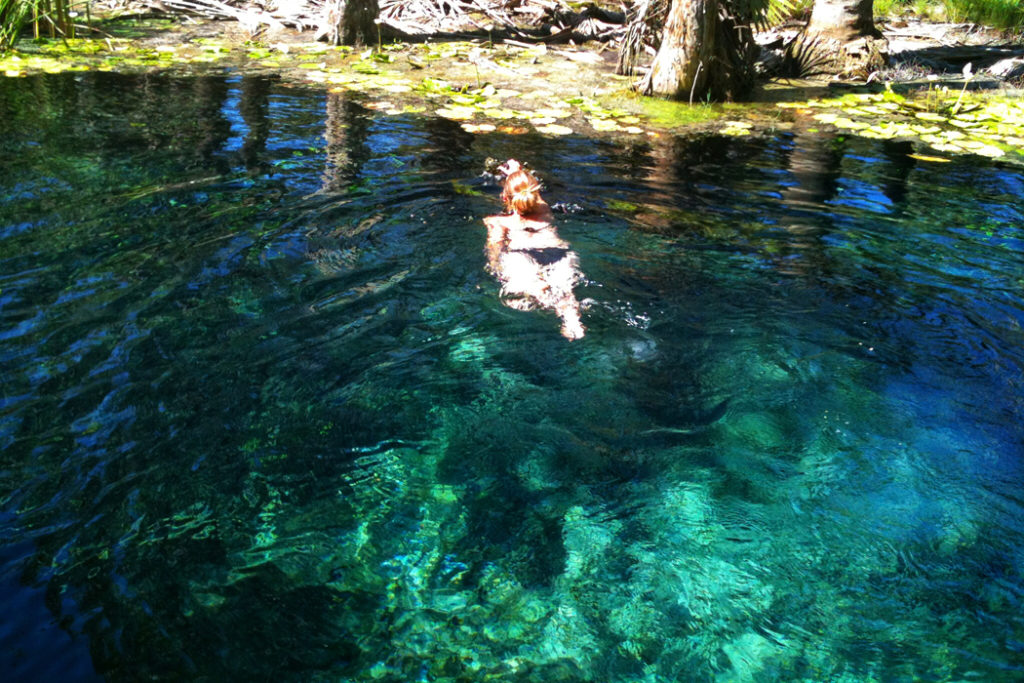
In the morning, the campground was a different world entirely, dominated by the Agile wallabies on the ground and Little red flying foxes in the canopy. Agile wallabies are the most common Australian native mammals in the Top End, but this was my first encounter with them, and I was fascinated by their familiarity with people. A relaxed female was snoozing so close to our tent that she was practically leaning on it.
The main attraction of Mataranka, the hot springs, was very busy, so we headed to the slightly less popular Bitter Springs for a swim and found a Merten’s water monitor munching on a crab.
Where to stay at Mataranka
Mataranka Roadhouse offers basic roadhouse accommodation: motel-style and family rooms, and has a restaurant.
Katherine Gorge & Nitmiluk National Park
Distance from Mataranka: 117 km. Driving time: 1.5 hrs
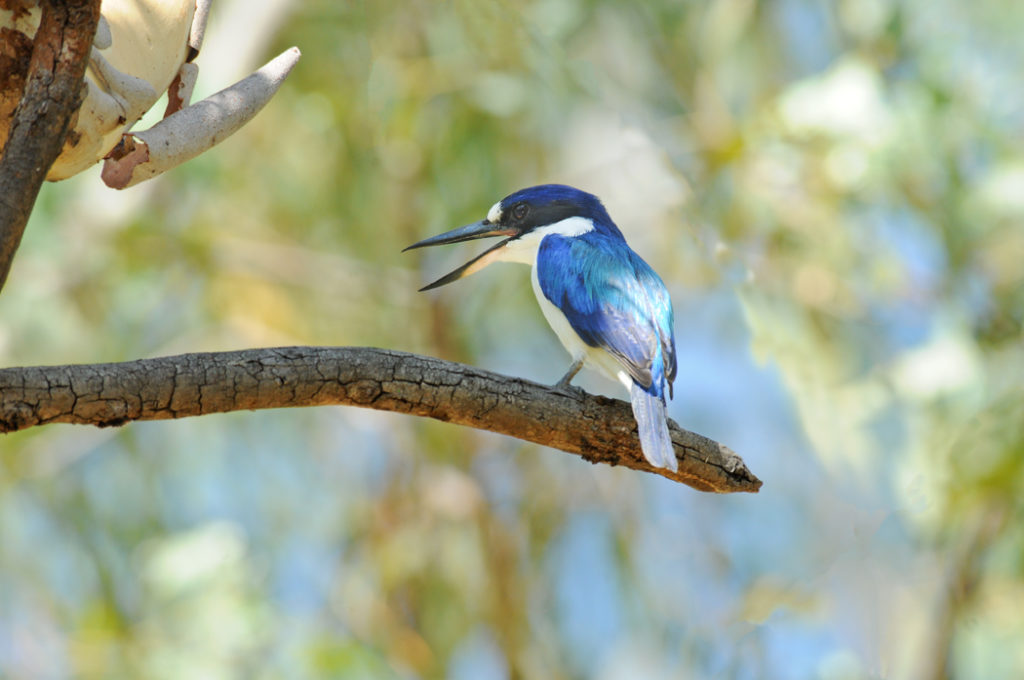
From Bitter Springs we headed to Katherine Gorge, locally known by its Aboriginal name – Nitmiluk. Typically, the main reason for visiting Nitmiluk is to take a Katherine Gorge river cruise, but in April, the water still runs too high & too fast after the rainy season. So we explored the area on foot.
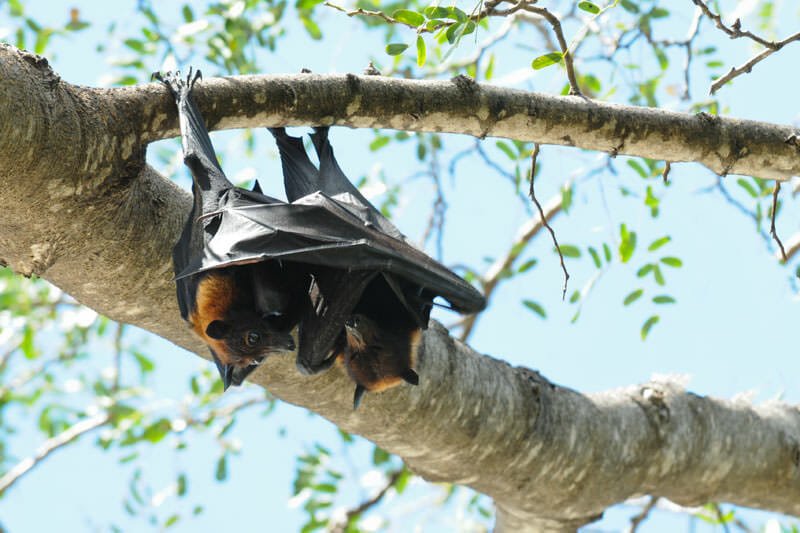
There were plenty of bird species at the campsite: Bar-shouldered dove, Silver-crowned Friarbird, Great bowerbird, Australasian yellow oriole, Red-winged parrot and Blue-faced honeyeater. The walk along the river turned up some Agile wallabies, a Forest kingfisher, Collared lorikeets and an elusive Oriental cuckoo.
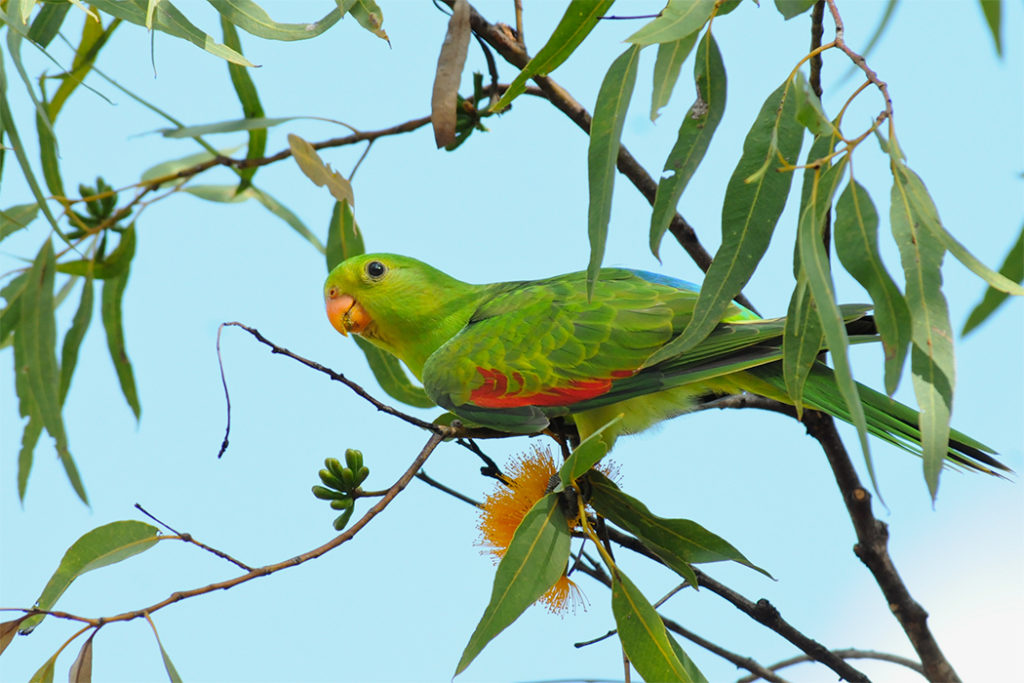
At night, we walked around the campsite and found a Brown tree snake, a few Rocket frogs and a couple of Bush Stone-curlews, which are more often heard than seen. Their wailing cry at night is not a sound for the faint-hearted.
Where to stay at Katherine Gorge
If you are looking to wrap yourself in comfort, consider Cicada Lodge. Each room is nestled within the natural bush that surrounds Katherine River. The rooms are elegantly decorated with a fusion of modern Australian décor and Indigenous-designed furnishings and artworks.
Kakadu National Park
Distance from Katherine: 152 km. Driving time: 1.5 hrs
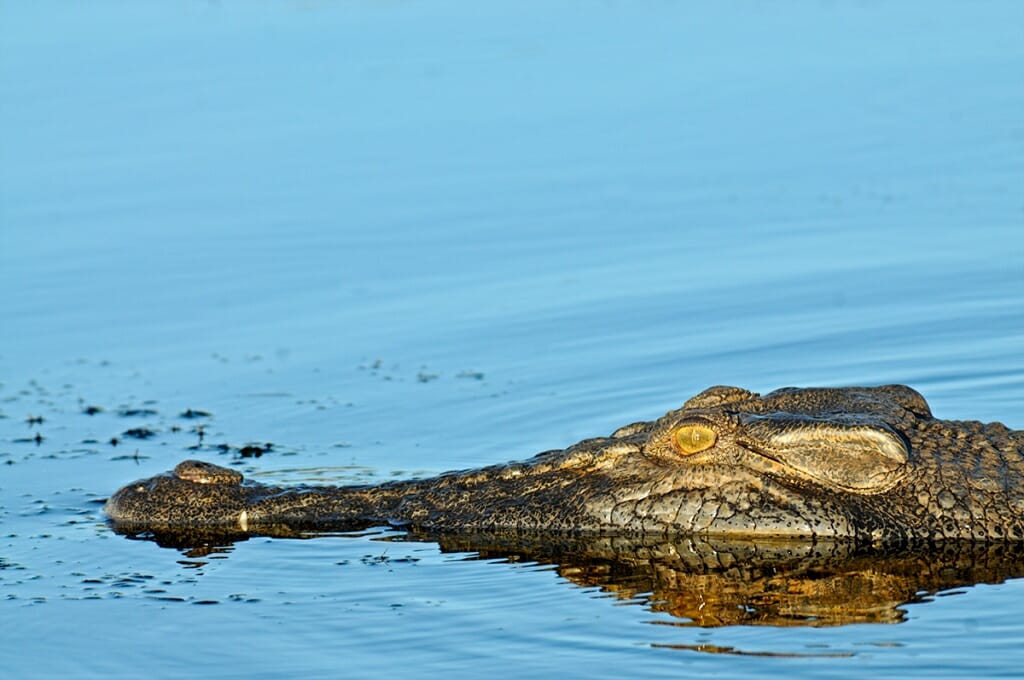
It’s only 230 kilometres from Katherine Gorge to Kakadu National Park – a breeze of a drive, compared to some of the distances we covered on this trip.
And of all the Northern Territory National Parks that we visited, Kakadu was the most remarkable. This part of our Adelaide to Darwin road trip was the closest we came to a traditional wildlife safari. Wildlife watching on the Yellow River Billabong must be some of the finest in the country.
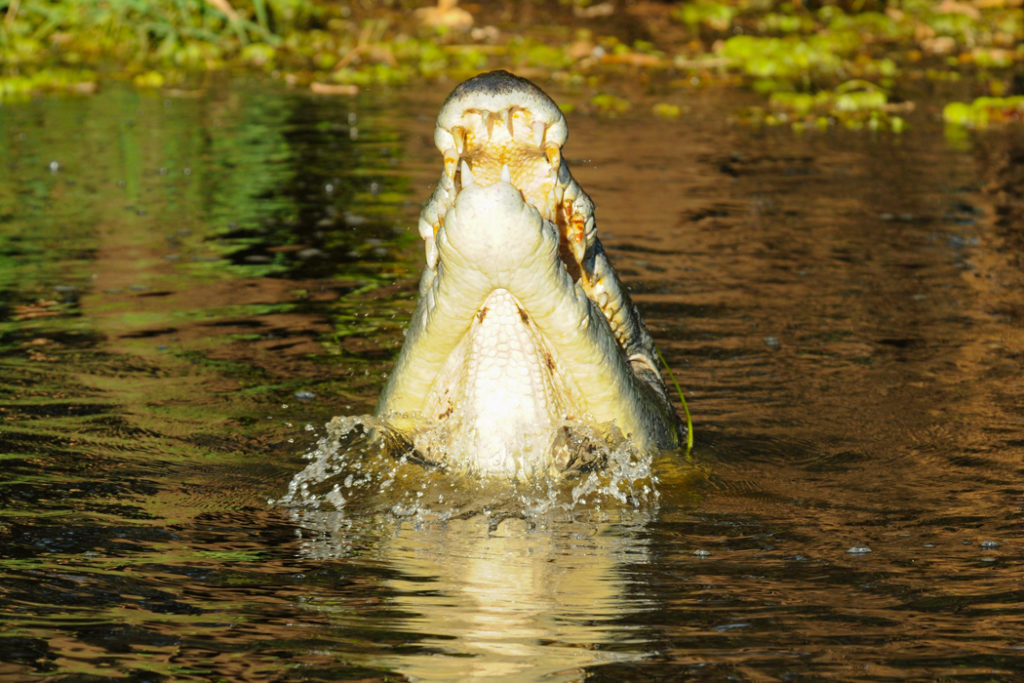
We’ve done two billabong cruises because we simply couldn’t get enough of this spectacular place. Giant Saltwater crocodiles, Crested jacanas (known as Jesus birds for their ability to ‘walk on water’), Jabiru stalks, White-bellied sea eagles, Kingfishers & Bee-eaters – the amount of wildlife on the Billabong is astonishing.
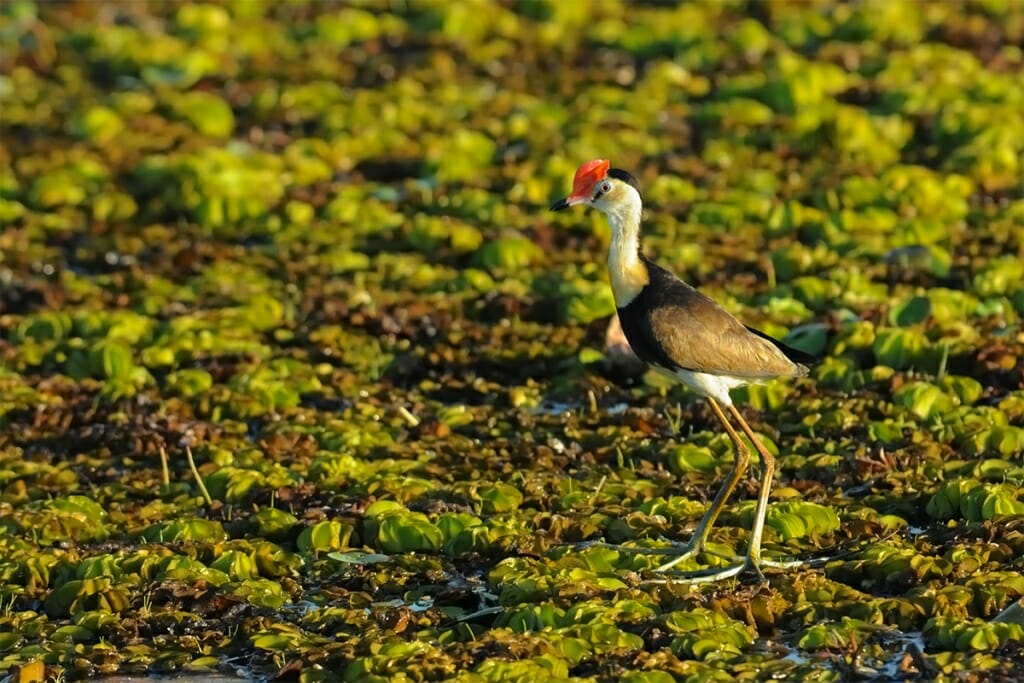
But there is more to Kakadu than the Billabong, of course. Ubirr Rock, famous for its Aboriginal art, is also a good place to spot the Short-eared rock wallabies.
Other mammal species we spotted while exploring the park were: Dingos, Agile wallabies, Black flying foxes, a Northern Brushtail possum and a Black-footed tree rat.
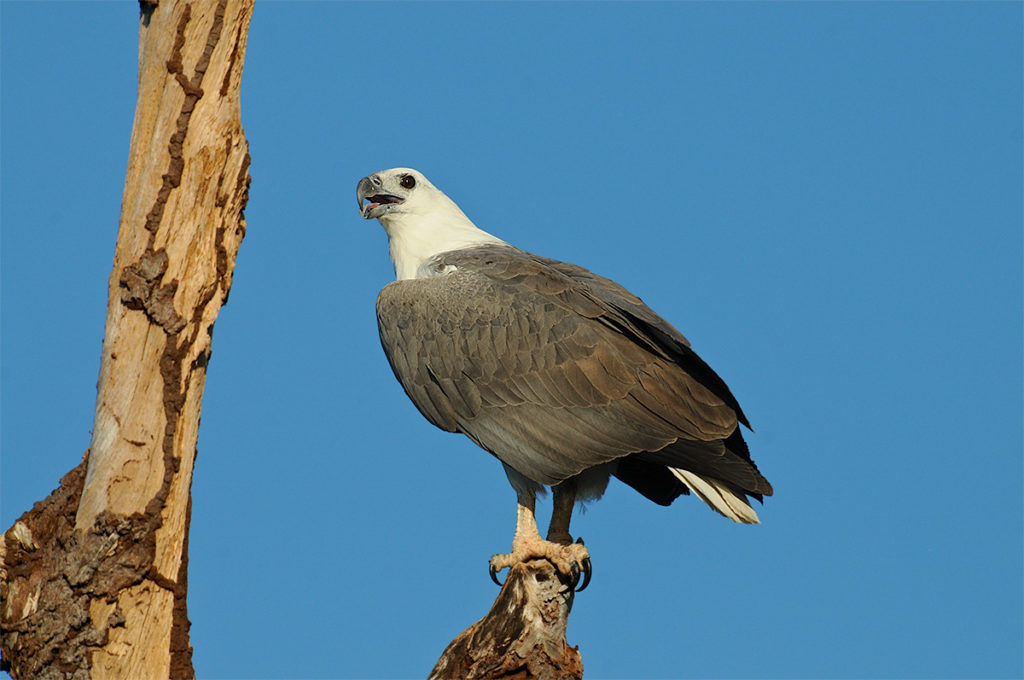
We also found three different species of pythons: Children’s, Black-headed and Carpet. And all that in just two days! Kakadu is a must for anyone interested in seeing native Australian animals in the wild. More details in my guide to wildlife spotting in Kakadu National Park
Where to stay in Kakadu
The most popular choice in Kakadu is the Cooinda Lodge Kakadu, located right next to the wharf where the Yellow Water Billabong cruise leaves from. Another popular option is Aurora Kakadu Lodge which offers a range of bungalows and dorm rooms for budget-conscious travellers.
Arnhem Highway and Marry River
Distance from Kakadu NP: 124 km. Driving time: 2 hrs
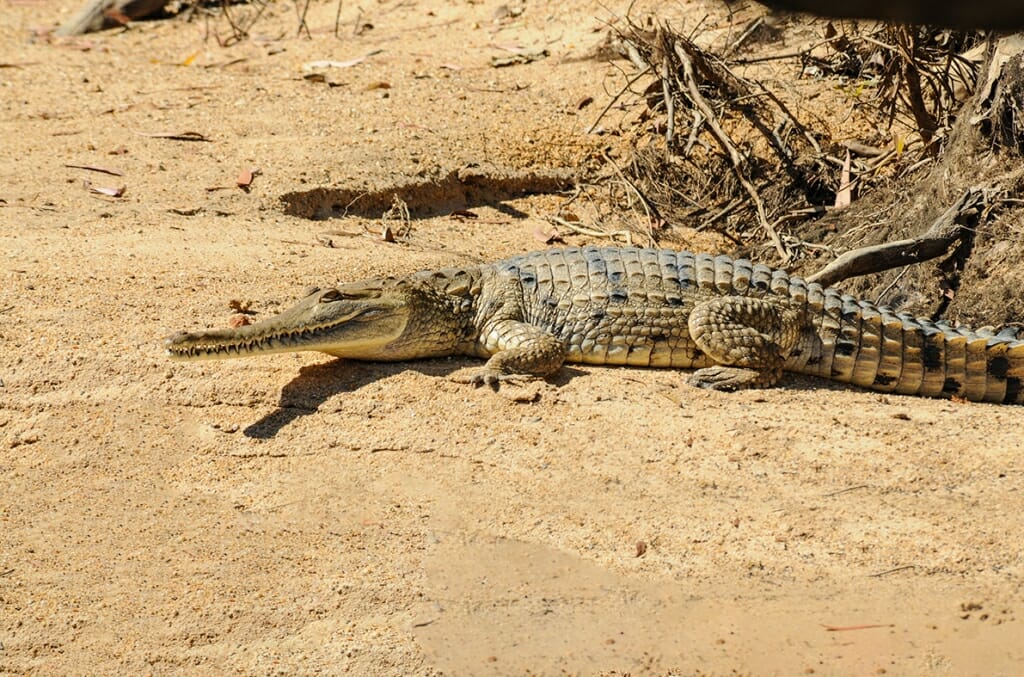
Our next destination – Mary River, was 210 km from Kakadu, along the Arnhem Highway, but we spent the best part of the day on the road. Why? Because Arnhem Highway is a wildlife watching destination in itself, much like the Transpantaneira Highway in the Brazilian Pantanal.
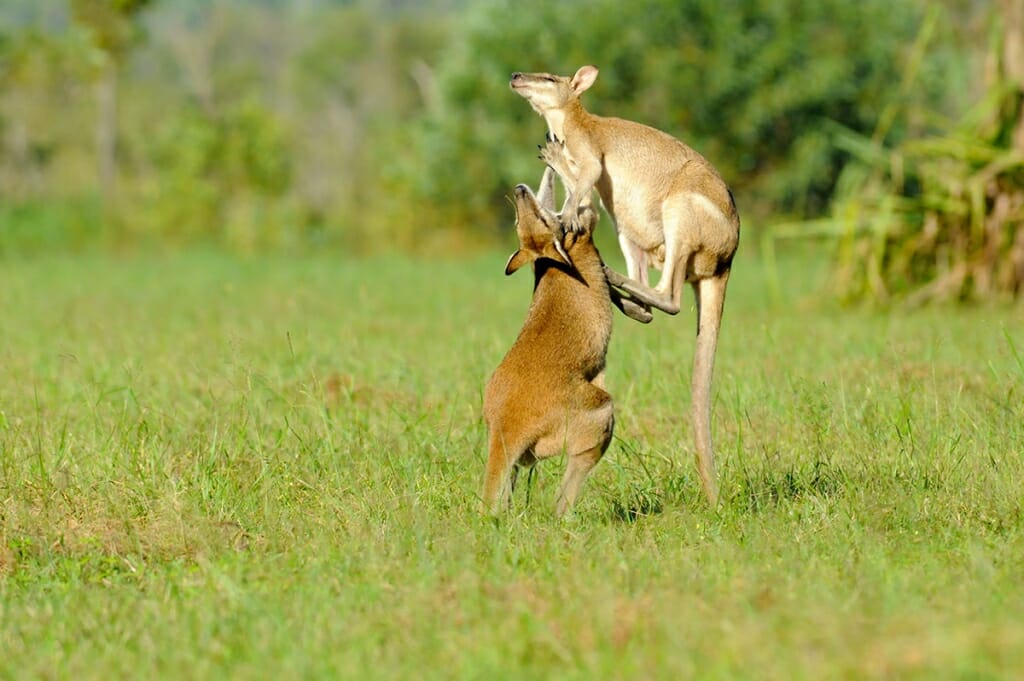
The grassy paddocks on the sides of the road were absolutely teeming with birds. We constantly stopped and got out of the car to explore the various hubs of activity. There were Jabiru stalks, Magpie geese, Gull-billed terns, Raja shell ducks and sparkling-white egrets in breeding plumage.
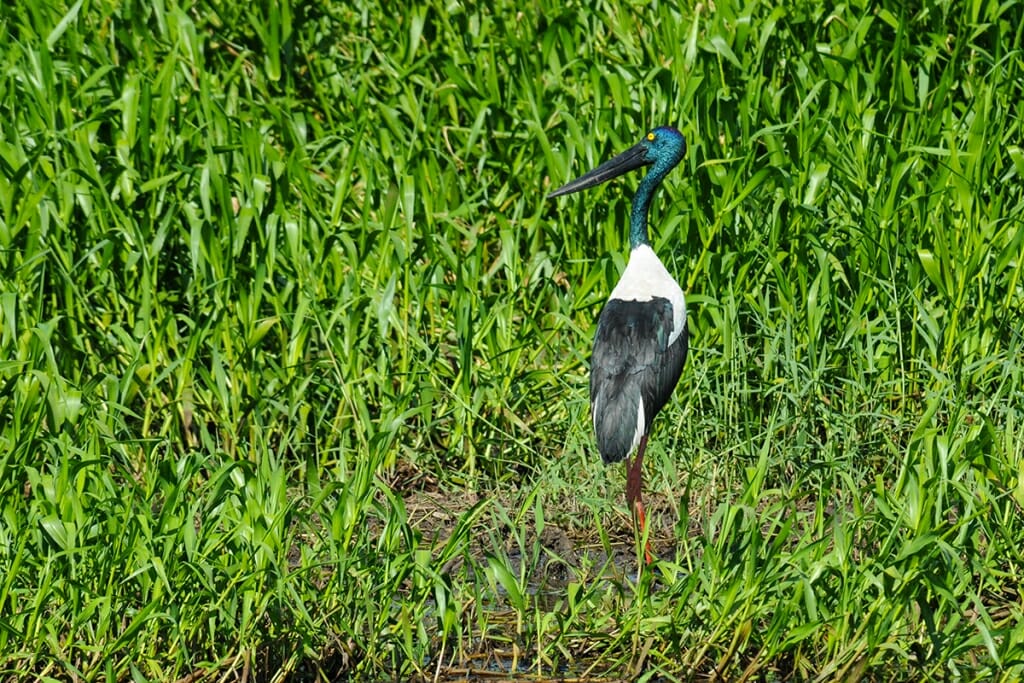
We arrived at Mary River just in time for the afternoon cruise. And even after Kakadu, we still managed to find new species here, including the rather cute Freshwater crocodiles and the impossibly vivid Azure kingfishes. For more details about visiting Mary River check out my guide to Mary River: a Wildlife Hotspot in Northern Australia.
Where to stay at Mary River
The place to stay at Mary River is the Mary River Wilderness Retreat. The retreat offers boat hire to explore the river and see the crocodiles. Mary River park itself is a haven for woodland and wetland plants and animals.
Fogg Dam
Distance from Marry River: 104 km. Driving time: 1.15 hours
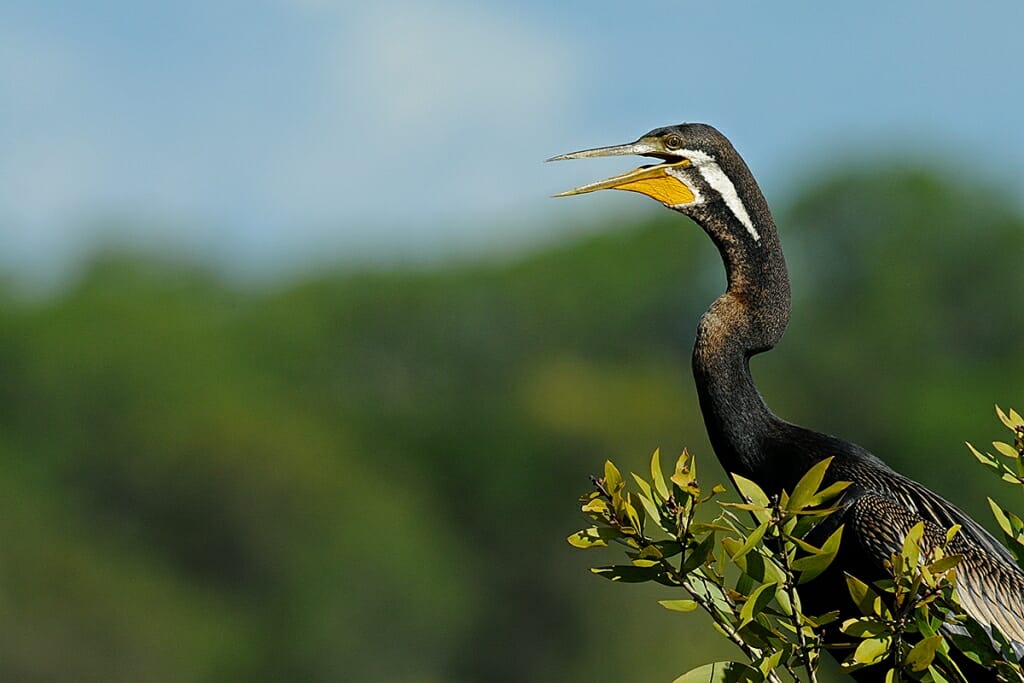
Our last destination before reaching Darwin was Fogg Dam. The dam was created to flood the surrounding countryside & and turn it into rice paddies. And if a dam does not immediately sound like a winning wildlife destination, here is an interesting fact about Fogg Dam – it supports the highest biomass of any place on earth.
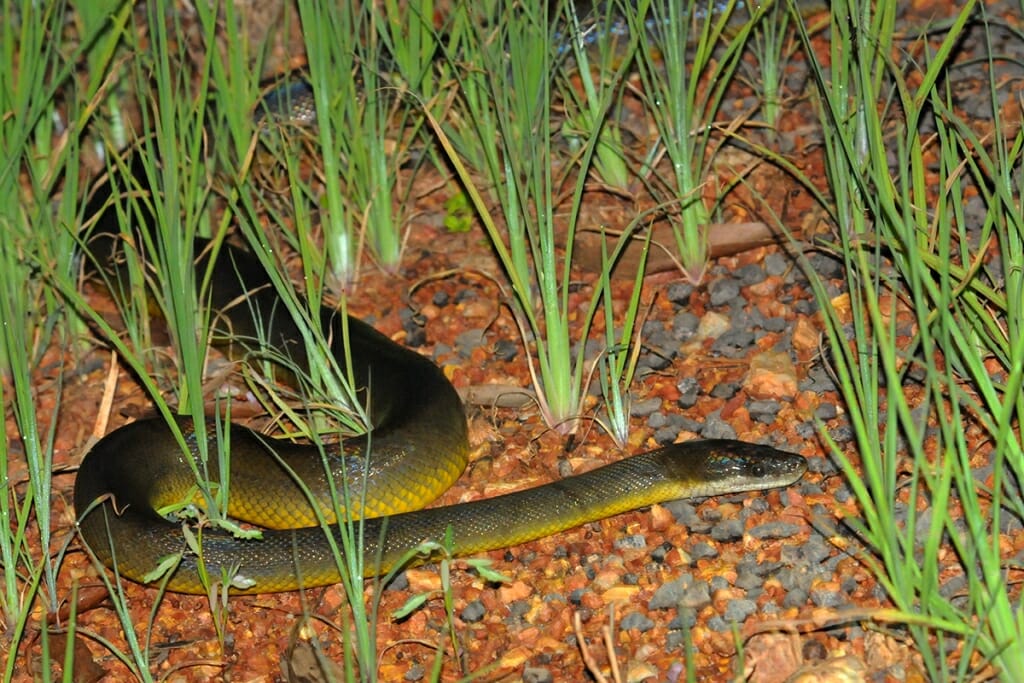
It is home to a huge population of Dusky rats and the equally impressive numbers of Water pythons and Olive pythons, that prey on the rats. Apart from the rats and the pythons, we spotted a few Barking owls, Nankeen night herons, Large-tailed nightjars and Tawny frogmouths. Oh, and the Saltwater crocodiles, of course!
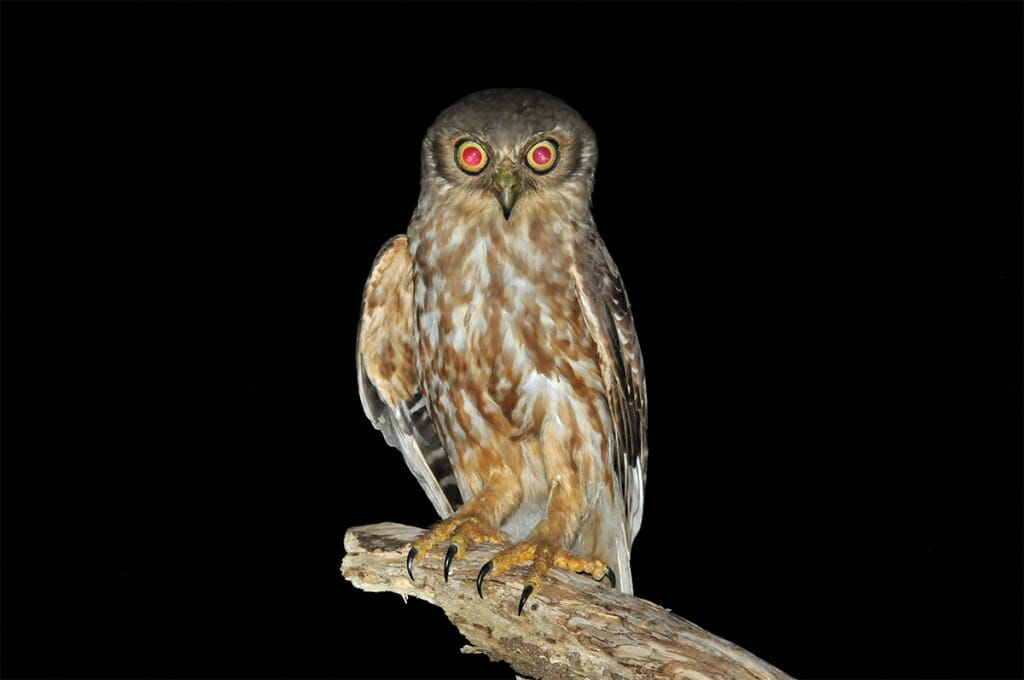
One word of warning for Fogg Dam – bring plenty of insect repellent and keep your car windows rolled up when you can. The amount of bugs in the air is staggering.
By day, Fogg Dam is the domain of waterbirds. They congregate here in the hundreds, and in April, many species spot their striking breeding plumage.
Darwin
Distance from Fogg Dam: 67 km. Driving time: 50 min
We finally reached the final destination of our epic Adelaide to Darwin road trip. In three weeks, we crossed the continent from coast to coast over 3,000 kilometres and technically, this was only our halfway point since we had to go back to western NSW. But first, we had to check out Darwin’s wildlife watching opportunities.
Darwin Botanic gardens
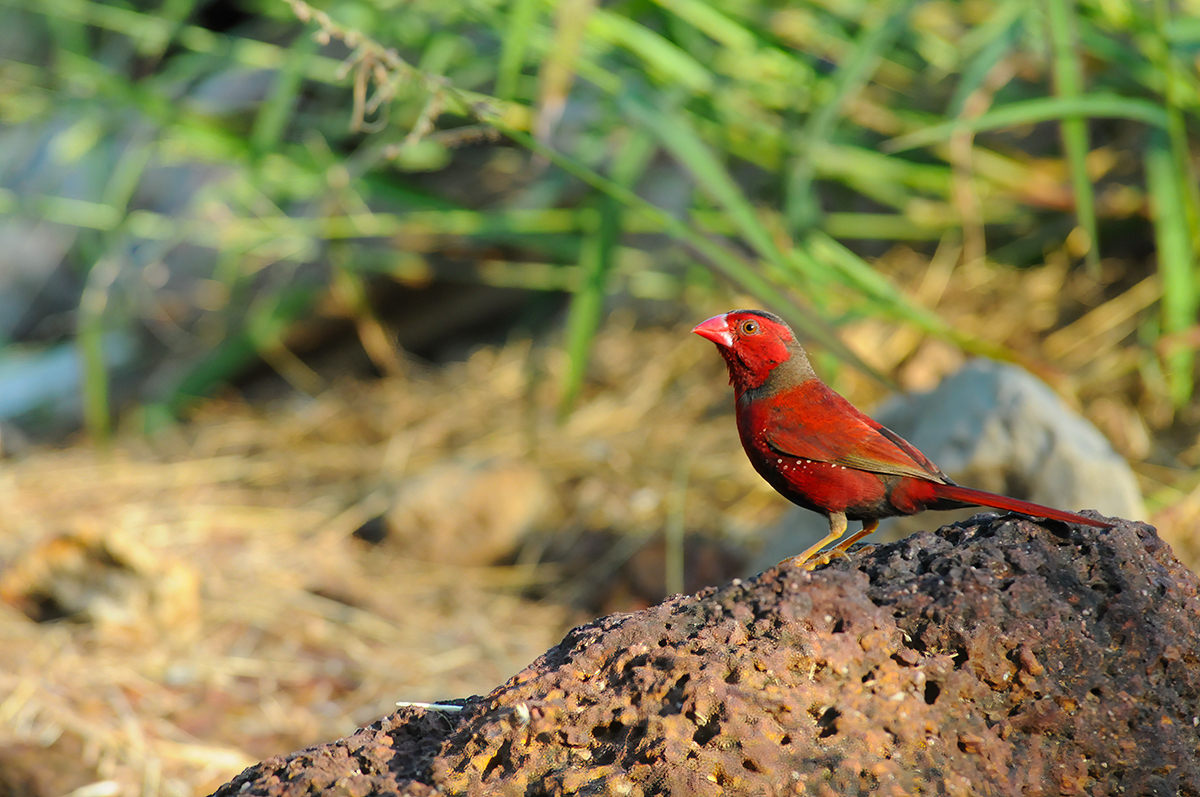
Botanic gardens are always a good place to see urban wildlife and Darwin’s gardens were not an exception. We spotted our first Blue-winged kookaburra, as well as some Double-barred and Crimson finches, not to mention the more common species of Darwin wildlife that we have already encountered on our trip.
Lee Point
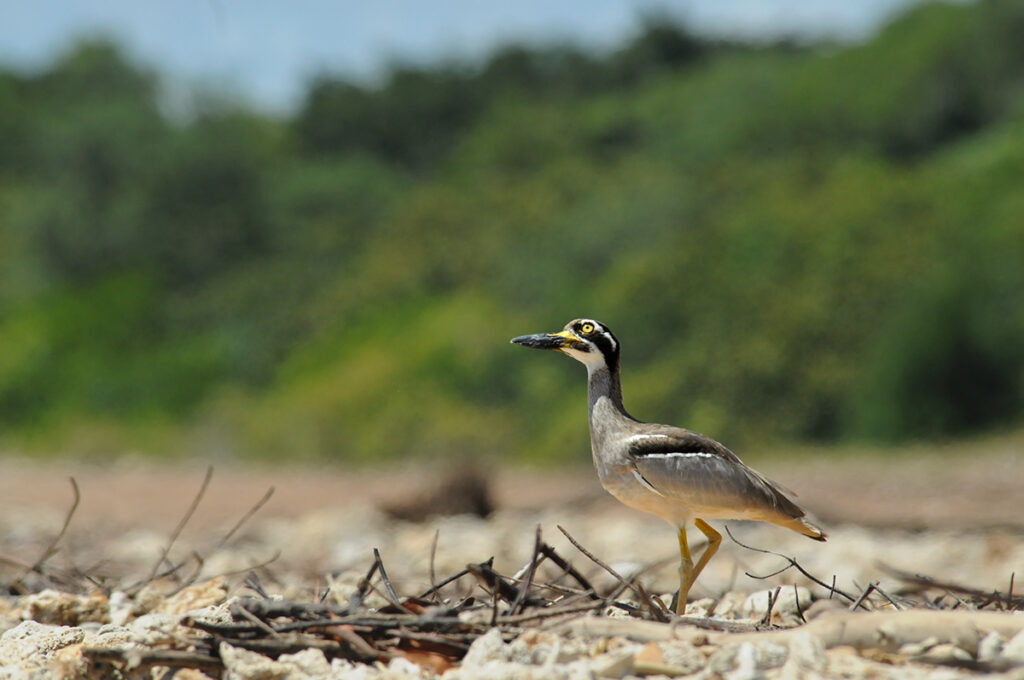
Darwin’s Lee Point is the perfect illustration of what an Australian beach looks like when it’s not overrun by people. Since swimming is not on the cards in the Top End (thanks to the crocs and the deadly jellyfish), the beaches are not of much interest to the sunbathers. Instead, they were occupied by all kinds of birds.
A weary Beach stone curlew foraged in the sand, dozens of Black kites perched on the branches of dead trees and dozens more circled overhead, while Red-capped plovers darted along the beach.
The rock shelves were overtaken by the breeding colonies of Crested terns, Little terns, Caspian terns and Silver gulls. Slightly further along the rock shelf a mixed group of Great knots and Red knots whiled away the afternoon. It is amazing how many different species we, humans, displace when we take over an area.
Mandorah island
We took a ferry to Mandorah island on a friend’s advice, who told us about a bat colony roosting underneath Mandorah jetty. We found the bats between the boards of the jetty walkway and they were very hard to see through the small crack. We left them be and spent an hour watching White-bellied sea eagles and Brahmins kites circling above the beach.
Arnhem Highway
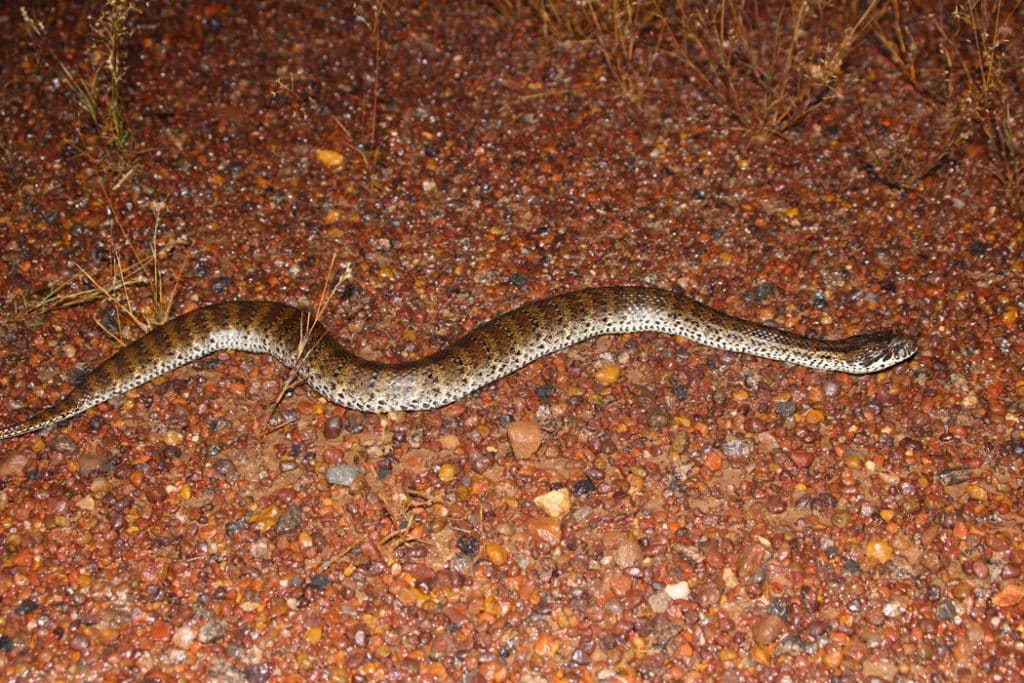
At night, we drove back to Fogg Dam, simply because it was the best wildlife-watching spot around. Apart from the usual suspects, we spotted a Dingo, a slaty-grey snake, a Northern brush-tail possum, a Barn owl and sadly, a dead Northern Brown Bandicoot on the road.
But the most interesting creature we came across was the Northern death adder. Australia is famous for being home to most of the world’s poisonous snakes. Out of the 25 most venomous snakes in the world, 21 live in Australia, and the Death adder is one of the top 10 most venomous Australian snakes.
I did get out of the car to photograph the silent killer as it was crossing the road, but I wouldn’t recommend it to anyone with a healthy sense of self-preservation. Check out this guide to spotting wildlife in Darwin for more details.
The journey back
The drive back may seem daunting – you have to retrace your steps for over 3,000 kilometres. But the beauty of it is that darwin to adelaide road trip gives you the chance to re-visit the greatest hits of your journey. And if you planned the trip wisely, you’ve left a few destinations up your sleeve to check out on the way back. That’s plenty of excitement to keep you motivated.
I hope our trip inspires you to add an epic road trip to your Australia bucket list. Just make sure you are familiar with Australian road trip essentials and prepared for driving across vast and unforgiving landscapes.
Colours of the Australian Outback
The colours of the Australian Outback you see on your road trip from Adelaide to Darwin are rich and vivid, somewhat unexpected in the harsh environment of the arid landscape. Rolling dunes of orange sand set against the background of clear blue sky, peppered with splashes of green vegetation. And when the rain does come to the desert, it usually does so in spectacular summer storms.
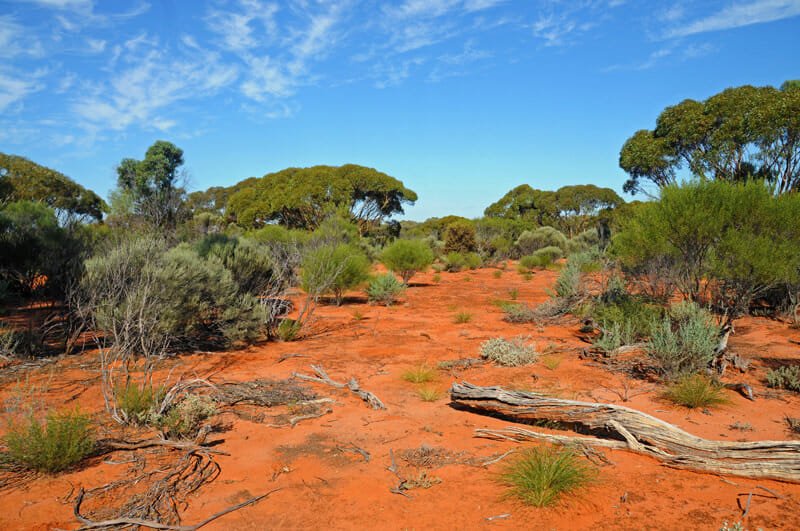
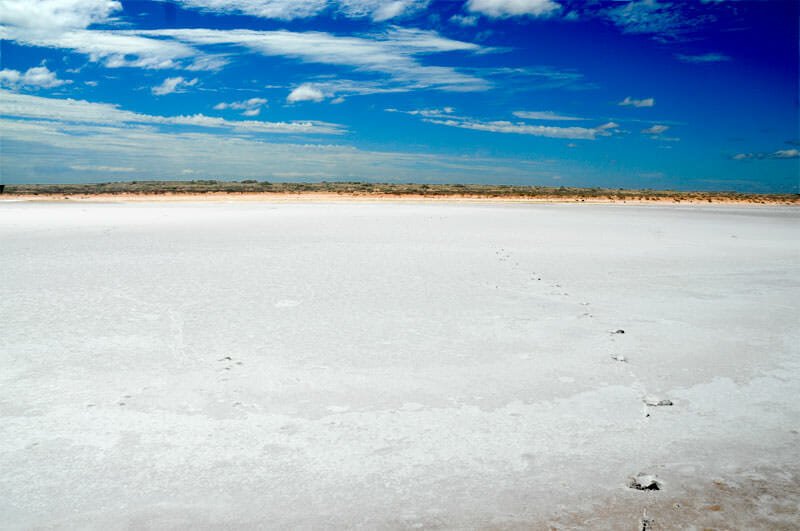
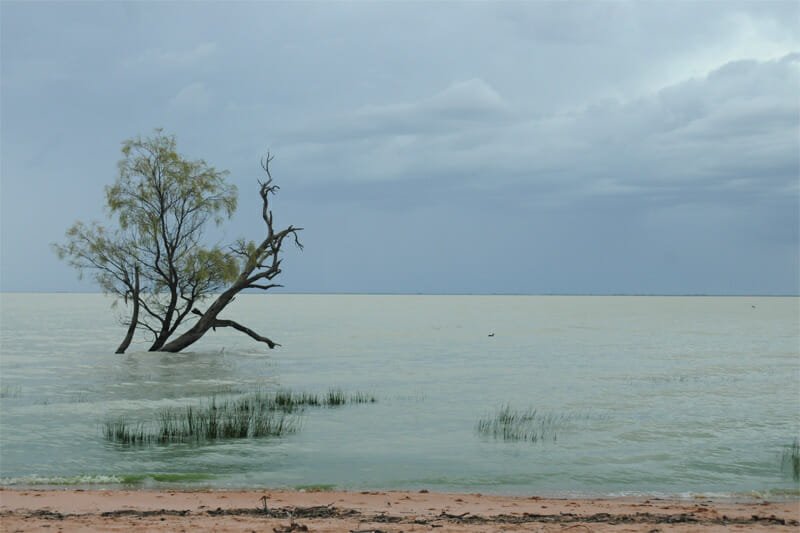
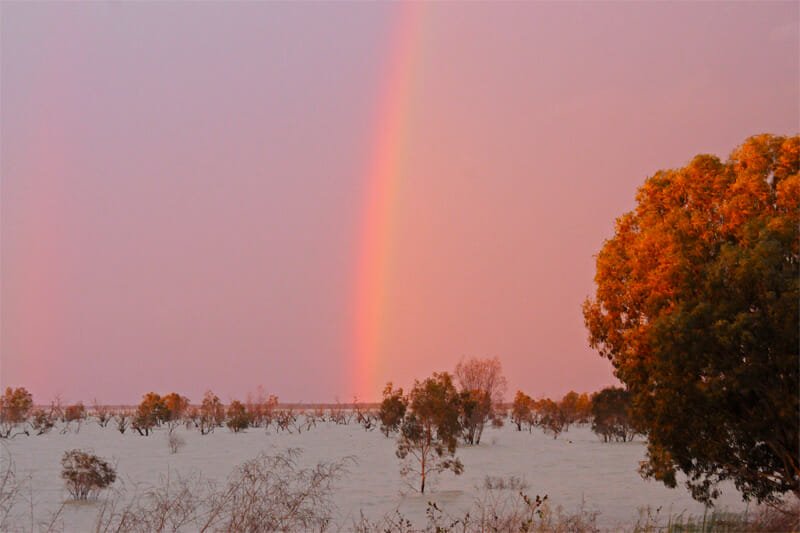
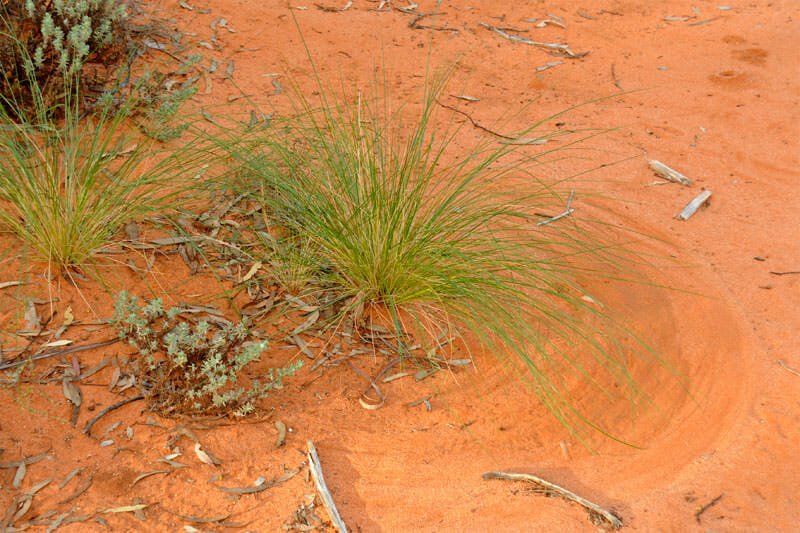
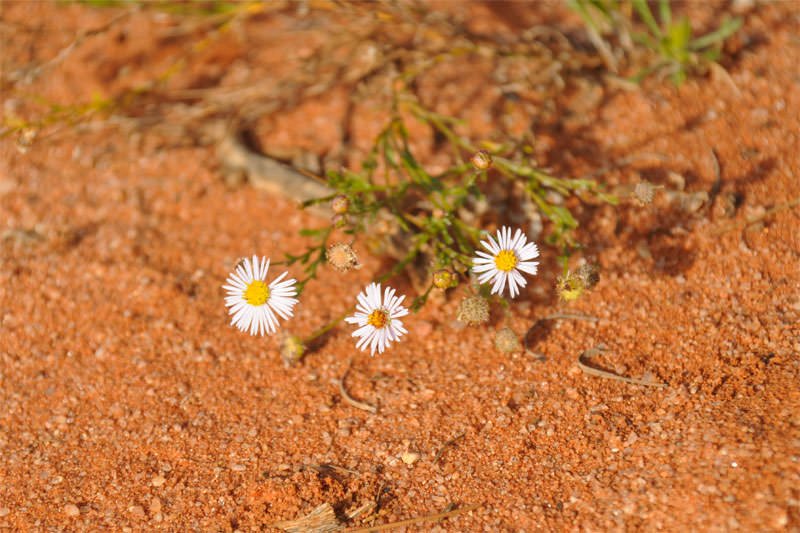
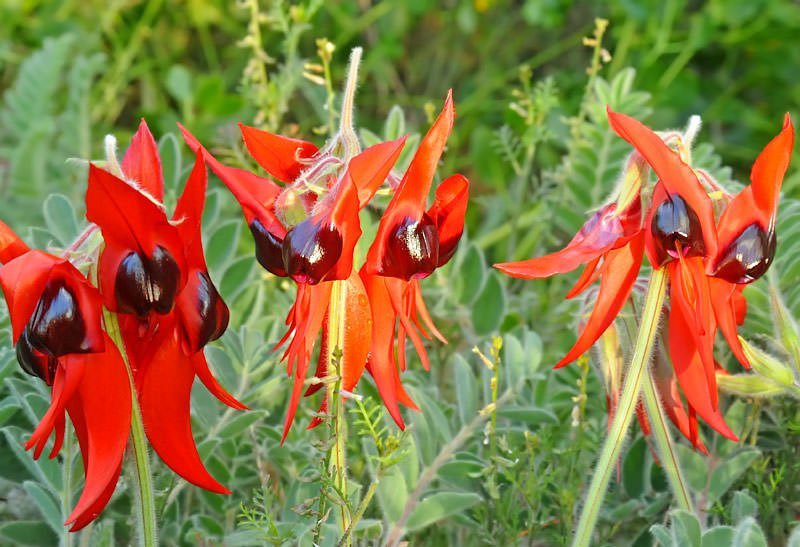
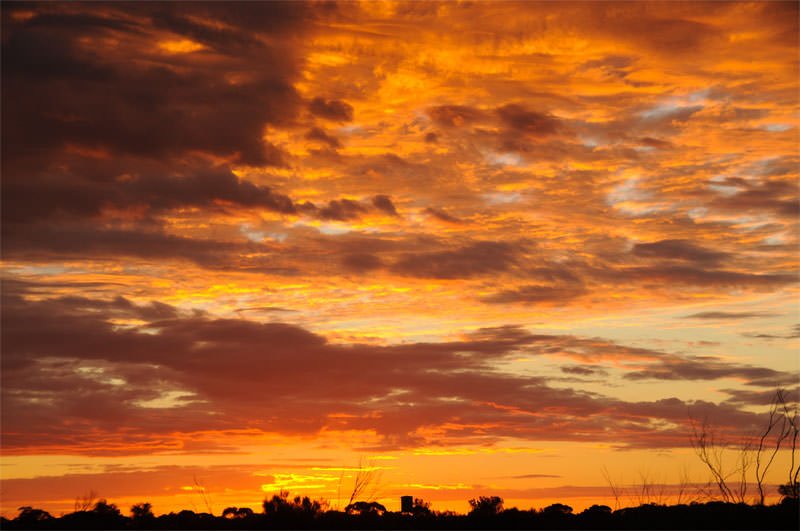
More Northern Territory nature adventures
- Karlu Karlu / Devils Marbles Conservation Reserve
- Things to Do in Darwin and Beyond for Nature Enthusiasts
- Fogg Dam Conservation Reserve – An Underrated Gem Near Darwin
- Adelaide to Darwin Road Trip: Ultimate Wildlife Safari in the Australian Outback
- Spotting Australian Desert Animals in the Simpson Desert
- Are Kakadu animals out to get you? Wildlife watching in Kakadu NP
- Uluru animals – Weird and wonderful creatures you can spot at Uluru
- Mary River: a Wildlife Hotspot in Northern Australia
- The stunning West MacDonnell Ranges – Northern Territory Road trip

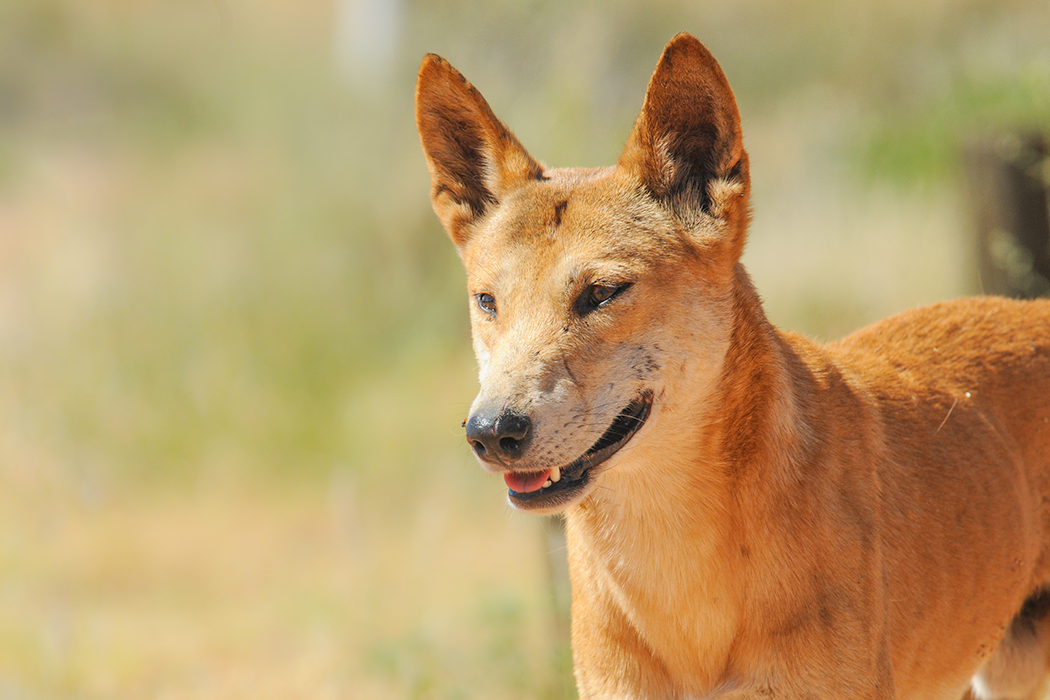
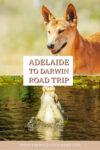
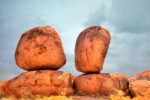
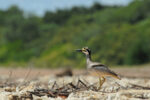
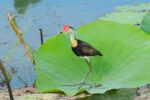
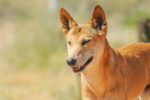
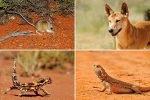
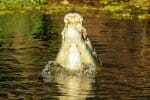
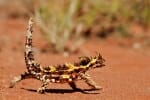
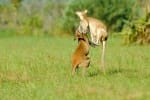
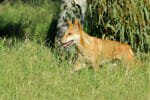
This has been such a joy to read! I’ve heard of Wallabys and Kangaroos but I wasn’t aware there’s a median between them! When I worked at Banff, we had a lot of Australians on Work Holiday Visas and most of them were terrified of bears, meanwhile us Canucks are deathly afraid of your spiders! I really wish I could visit Australia someday- but right now it just feels so far away (and expensive, really, everything there costs a ton of money)
Thank you, Lauren! I would love to have bears as neighbours :)! We do have a few poisonous spiders, but you don’t really come across them too often unless you go sticking your hands into leaf litter or leave your shoes outside your tent when camping :). Venomous snakes are a bit more common.
Wow all of these animals look so cool! I’m stunned that you managed to capture this many on camera (I am absolutely terrible at taking pictures of animals lol).
Thank you, Sarah. Yes, some of them are a little bit harder than others, but a lot of the animals are quite happy to sit still for a minute or two while you plonk yourself on the ground to take some shots :)
Woah, what an amazing trip! My husband and I just booked our flights to Australia for the holidays. We’re starting to plan where we’re going to visit so this is super helpful!
How exciting! If you make it to Uluru, stay back after the sunset and check out the adorable Spinifex hopping mice :)